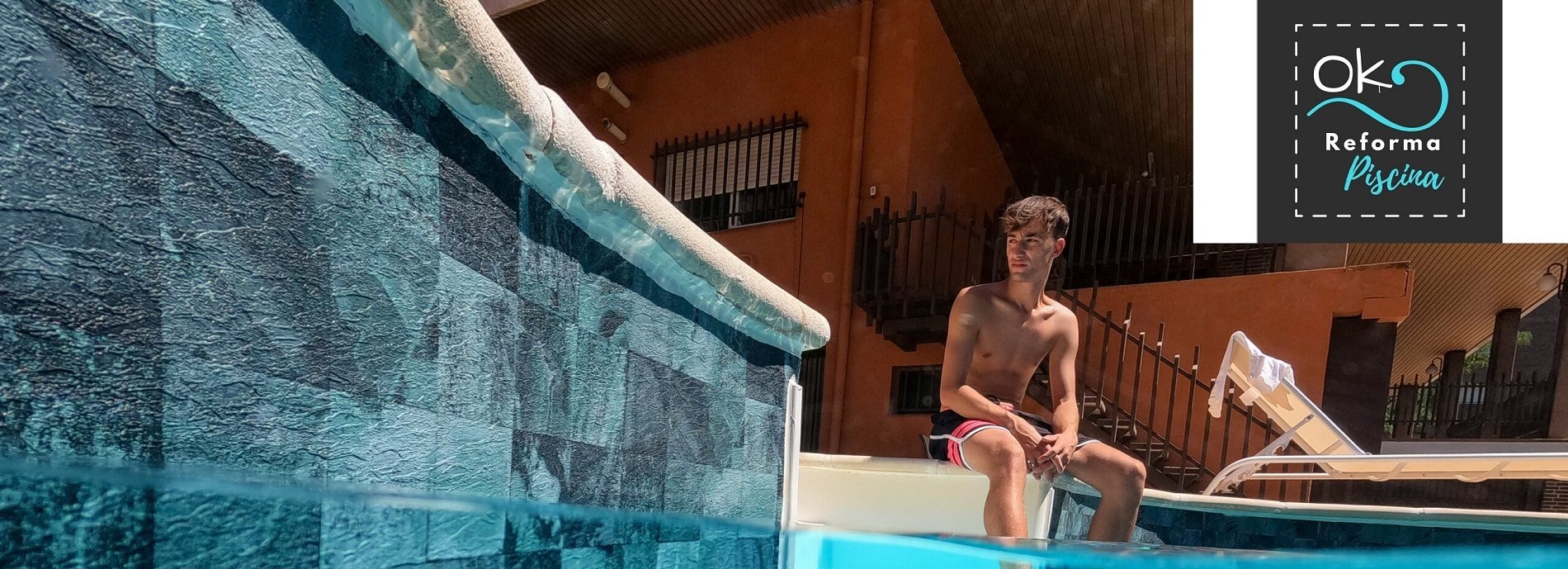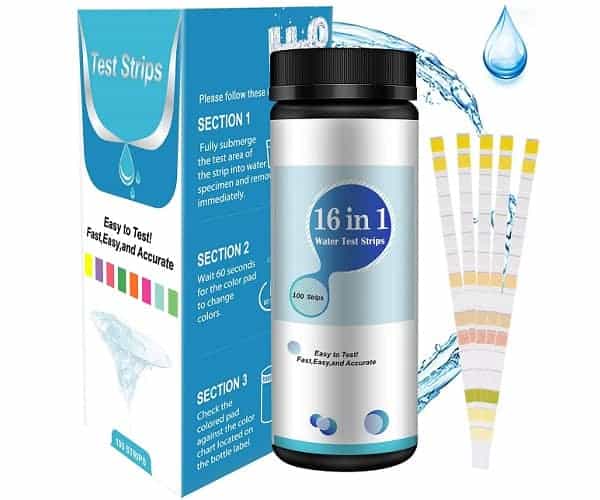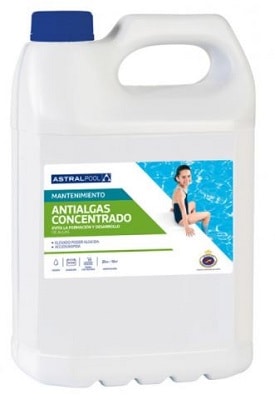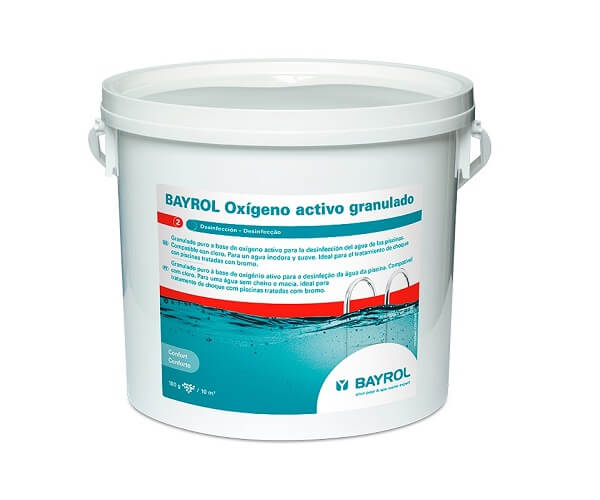
Table of contents of the page
En Ok Pool Reform within Swimming pool water treatment we show you the product Active oxygen for swimming pools: water disinfection without chlorine.
What is ozone
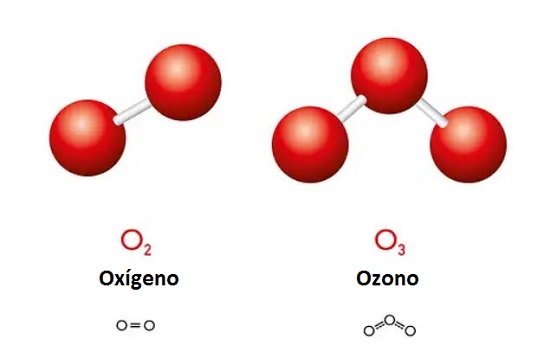
What is ozone or active oxygen?

The active oxygen pool is a molecule composed of three oxygen atoms Ozone (O3) is an allotrope of oxygen with three oxygen atoms.
Ozone is the result of the rearrangement of oxygen atoms, an allotropic form of oxygen, that is, it is the result of the rearrangement of oxygen atoms when the molecules are subjected to an electrical discharge. Therefore, it is the most active form of oxygen.
ACTIVE OXYGEN is a molecule composed of three atoms of oxygen (oxygen trivalent), which has the peculiarity of dissolving without leaving traces or chemical residues, returning to being oxygen breathable O2 in a short period of time
Definition ozone in chemistry = allotropic type condition of oxygen
This term is defined (in chemistry) to an allotropic type condition of oxygen in which it is formed naturally in the atmosphere through a ozonosphere and it causes electrical discharges produced by the storm, it has oxidizing properties and protects the earth from ultraviolet rays.
Etymology word ozone

The word ozone comes from the Greek ózein, which means “to smell.”
Etymologically, this word comes from the German "Ozon" which means ole, and in turn forms from the Greek "οζειν" (ozein) which means to have a smell.
What is another name for active oxygen?

Active oxygen for swimming pools is also called pool ozone.
El active oxygen, also called ozone (O³).
Uses of active oxygen
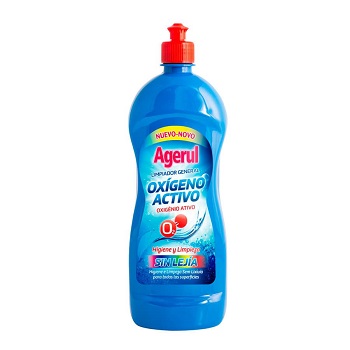
Active oxygen disinfectant is the strongest chemical disinfectant
and its use in water treatment (ozonizing water) is increasingly common. In the air the O3 It has a very characteristic odor, this is detectable by most people in concentrations greater than 0.1 ppm.
How active oxygen works
Dissolved in water, Ozone begins its decay process and forms hydroxyl radicals (HO·), these also react with microorganisms to inactivate them. However, the action of direct O reactions3 with contaminants, they have a greater disinfection performance than the hydroxyl radical. For this reason, it is recommended to add a residual concentration of this to ensure the integrity of the water.
How long does ozone last?
Ozone is an unstable molecule that quickly reverts to diatomic oxygen.

Half-life of ozone molecule in air
On one hand, the half-life of the ozone molecule in the air (time in which half of the ozone in the air is decomposed) is 20-60 minutes, depending on the quality, temperature and humidity of the ambient air.
Half-life ozone molecule in water
On the other hand, the half-life of the ozone molecule in water is approximately the same as in the case of air (20-60 minutes), although it also depends a lot on the temperature, pH and water quality.
Who discovered how to treat a swimming pool with active oxygen?

Timeline of the History of Ozone / active oxygen
- For starters, in 1783, the Dutch physicist Van Marum predicted its existence when investigating with electrostatic machines, which gave off a characteristic odor when the air was crossed by electric discharges.
- Second, the In 1839, Doctor Christian Schönbein gave it the name Ozone. (its name derives from the Greek ozein = to smell). All this thanks to the fact that he identified it in 1840 when electrolyzing water and decided to call this gas ozone by the Greek root ozô-ozein (which means to smell).
- The third important fact in the history of ozone is that the 1857 a generator is designed.
- Then, 1858, Houzeau checks the existence of ozone in the troposphere
- And later, in 1865, Soret, discovered that Ozone is nothing more than an Oxygen molecule of three atoms; That is, it establishes it with the following formula: Allotropic form of oxygen, empirically 03 and structurally triangular, where the central oxygen atom is involved in a double covalent bond and a dative covalent bond.
- Then in 1880 Chappuis performs its first spectroscopic detection.
- Then in 1881 W. Hartley (1846-1913) found the ozone absorption band around 300 nanometers, suggesting that it must be found naturally in the upper atmosphere in a greater proportion than on the Earth's surface.
- At the beginning of the XNUMXth century, a German chemical engineer named MP Otto managed to determine its density, molecular constitution and its formation in nature, devising the ideal OTTO system. to produce it in the same way through electrical discharges as nature creates during storms. In this way, it is evident that ozone is a blue gas at high concentrations and with a strong and penetrating odor, with the olfactory threshold at 0,02 ppm. Furthermore, its density is 1,66 g/cc and its melting and boiling points are, respectively, at -193º C and -112º C. It is poorly soluble in water (1,09 g/l at 0º C), although Its solubility is greater than that of oxygen. It is stable at elevated temperatures.
- 1906, Nice (France), it was used for the first time to treat plant water.
- Since the 50s, it has been known that active oxygen is being used to maintain swimming pool water, replacing chlorine and bromine, since it has a sterilization power 3.000 times greater than that of chlorine.
- To finish, in 1969, the first modern Ozone Generator was developed, based on the OTTO system.
What is ozonation

What is ozonation: alternative to chlorination
What is ozonation?

What is ozonated water?
Ozone is a colorless, odorless gas consisting of three oxygen atoms. In gas form, ozone is an unstable molecule that can damage the lungs when inhaled. When ozone is dissolved in water, the water is ozonated and is believed to have some therapeutic effects, including antioxidant and antimicrobial properties and use in dental therapy, cancer treatment, and food safety techniques.
In conclusion, ozonation (some call it ozonation) is a good alternative to chlorination (mainly in pre-oxidation), when there are phenols and other organic substances that are precursors of trihalomethanes in the water.
Why active oxygen is not used more in water treatment

How ozone reactions are carried out
- Direct reactions that attack double bonds and some functional groups;
- Indirect reactions They are due to the action of hydroxyl radicals that originate when ozone decomposes in water.
What does a water ozonation system include?
A water ozonation system fundamentally includes three facilities or equipment: Ozone generation (ozonator), contact of ozone with water (contactor) which is usually carried out either by bubble diffusers or by Venturi type injectors and the released residual ozone destroyer. or detached from the mixing chambers, which is usually carried out by thermal destruction or by catalytic destruction with palladium, nickel oxide or manganese catalysts.
How active oxygen is formed
The formation of oxygen into ozone occurs with the use of energy.
This process is carried out by an electrical discharge field as in CD-type ozone generators (simulation of lightning corona discharge), or by ultraviolet radiation as in UV-type ozone generators (simulation of the sun's ultraviolet rays). .
In addition to these commercial methods, ozone can also be produced through electrolytic and chemical reactions.
In general, an ozonation system involves passing clean, dry air through a high-voltage electrical discharge, i.e., a corona discharge, which creates an ozone concentration of approximately 1% or 10 mg/L.
In treating small amounts of waste, UV ozonation is most common, while large-scale systems use corona discharge or other bulk ozone production methods. Ozone test strips are a must.
The raw water is then passed through a venturi throat which creates a vacuum and draws ozone gas into the water or air is bubbled through the water being treated. Since ozone will react with metals to create insoluble metal oxides, subsequent filtration is required.
What is ozone therapy
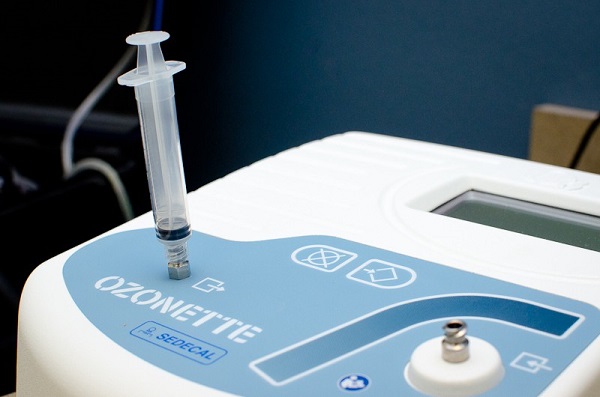
What is Ozone Therapy?
Ozone therapy refers to medical practices that use ozone gas.
Ozone gas is a form of oxygen. This colorless gas is made up of three oxygen atoms. In the upper atmosphere, a layer of ozone gas protects the Earth from the sun's ultraviolet radiation. However, at ground level, ozone is “a harmful air pollutant.”
Ozone gas is harmful when a person inhales it, causing irritation of the lungs and throat, coughing, and worsening asthma symptoms. High exposure can cause lung damage and can be fatal.
Therapeutic effects of ozone therapy
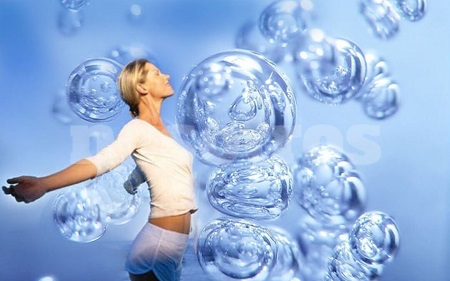
Below we list some of the most common therapies performed with ozone:
- Arthritis treatment.
- Fight viral diseases such as hepatitis B and C, shingles, cold sores and flu.
- Disinfect wounds by activating the immune system.
- Supportive therapy for cancer patients
- Supportive therapy for cardiovascular diseases.
- Strengthens the immune system
- Helps cleanse the liver
- Improves circulation problems.
- Helps fight and prevent infections.
- Delays aging processes
- Helps control chronic fatigue syndrome and stress. T
- Treatment of wounds, acne, psoriasis
- Rheumatic diseases
- Supports diabetes therapies.
- Allergies
- joint stiffness
- Etc
Video what ozone therapy is and what it is for
What are the properties of ozone?

Physical properties of ozone
Physical properties of active oxygen
- It is very unstable, which is why it must be generated in situ, in the water treatment plant itself.
- It decomposes quickly, returning to originate diatomic oxygen.
- The half-life of ozone in air is about 20 minutes, in water it is very variable, depending on various factors (temperature, pH, substances present in the water, etc.), it can vary from 1 minute to 300 minutes.
- All things being equal, it is more stable in water than in air. It is 1,3 times denser than air.
- Molecular weight ……………………….48
- Condensation temperature………-112 ºC
- Melting temperature…….…………. – 192,5ºC
- Density…………………………………… 1,32
- Density (liquid at – 182 ºC)…………..1,572 gr/ml
- Weight of one liter of gas (at 0º and 1 atm.)…1,114 gr.
Destructive power of ozone

Highly oxidizing property: ideal disinfectant with ozone
- Firstly, it is worth mentioning that ozone is a strong oxidant, giving it properties as a biocide, deodorant and decontaminant. All this is thanks to the fact that it shares the electrons between three oxygen atoms instead of two and therefore the resulting molecule is very unstable; Consequently, it tends to capture electrons from any compound that approaches it to recover its stability.
- In second place, Ozone improves the respiratory process at the cellular level: Our cells use oxygen to oxidize and paying attention to the fact that the ozone molecule has three oxygen atoms, it is understood that it will have more oxidation power than the oxygen molecule itself, which only has two oxygen atoms.
- As we have already said, the Ozone molecule (O3), composed of three Oxygen atoms (O1), has a negative charge, and we know that negative charges They eliminate free radicals that cause cancer.
- By its very nature, ozone is highly oxidizing, destroying pathogenic microorganisms by oxidizing them., thanks to the fact that negative charges, as happens with any magnet, are quickly attracted to positive charges and this is where the miracle lies. For this reason, pathogenic microorganisms (bacteria, viruses, fungi, prions, spores, odor molecules...) have a positive charge, and when they collide with them, thanks to the high oxidizing power of Ozone, they are destroyed almost immediately, destroying themselves At the same time, Ozone will also lose an Oxygen atom (O1), leaving the Oxygen molecule (O2) as residual. And, for this reason, they cannot develop immunity to Ozone. Therefore, it is responsible for disinfecting, purifying and eliminating pathogenic microorganisms such as viruses, bacteria, fungi, mold, spores... As additional information, according to different studies, ozone kills 99,9992% of all known pathogenic microorganisms When blown into water, ozone rather eliminates pathogens in a matter of seconds unlike other disinfectants.
- Secondly, and as a differential characteristic, ozone does not leave chemical residues since it is an unstable gas and quickly decomposes into oxygen due to the effect of light, heat, electrostatic shocks, etc.
- Ozone is the most powerful oxidant for disinfecting water, air and surfaces: Ozone is broken down into oxygen and injected into water. generates hydrogen peroxide (hydrogen peroxide) and hydroxyl free radicals, a powerful oxidant even above Ozone.
- Ozone is effective in partially oxidizing organic matter in water to biodegradable compounds that can be removed by biological filtration.
- In this way, it will oxidize much more quickly than the Ozone molecules themselves, which explains the great effectiveness of ozone as a disinfectant in waterFurthermore, ozone, by itself, does not affect the pH and in other words, it has a bleaching action in the water, something that gives it transparency and crystallinity.
- Under normal conditions of pressure and temperature, in water, Ozone is up to thirteen times more soluble than Oxygen. Nonetheless we will find more oxygen than ozone in the water, since there is a greater concentration of oxygen than ozone in the air, it is easy to understand that a greater amount of oxygen is also dissolved in water than ozone.
- Ozone molecules weigh more than air and for this reason they tend to fall, purifying as they fall. If they encounter water vapor in their fall, they will form hydrogen peroxide, a component of rainwater, which is why plants grow better with rainwater than when watered with groundwater.
- In addition. Ozone is one of the most powerful oxidants among those available for the degradation of organic compounds, eliminating odors (by directly attacking the cause that causes them (pestilential substances), and without adding any other odor to try to cover it up, as air fresheners do. ) and unpleasant flavors and degrade chemical compounds of various nature.
- On the other hand, ozone is excellent in the oxidation of metals such as iron, manganese, etc., enhancing the flocculation and coagulation of organic matter, which improves filtration.
- Finally, Ozone must be generated in situ and cannot be stored due to its own instability which means its life is very limited., since it quickly recombines, leaving the Oxygen molecule as a residue; Therefore, it also eliminates the danger of having to store a large amount of product.
Where can we find active oxygen naturally?

How ozone is formed naturally
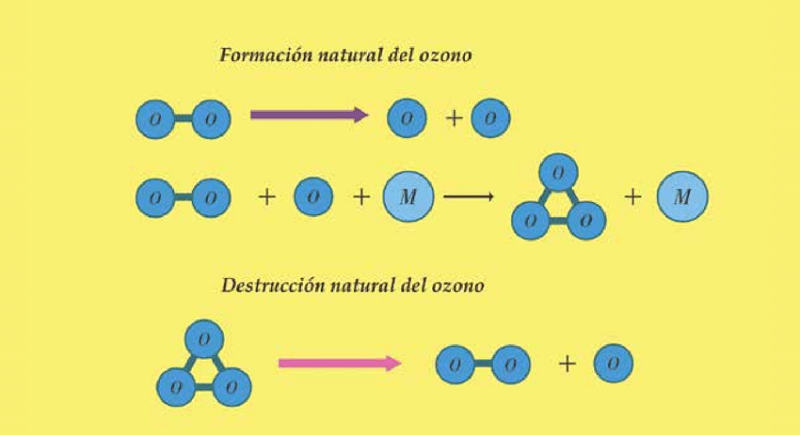
Ozone is generated naturally at high levels of the atmosphere by the action of UV radiation from the Sun.
Ozone is formed naturally at high levels of the atmosphere by the action of UV radiation from the Sun.l, consequently, the ionic dissociation of the oxygen molecule and the subsequent reaction of the formed ions with new oxygen molecules occurs.
Active oxygen at low levels of the atmosphere is produced thanks to storms
However, at lower levels of the atmosphere, ozone is formed thanks to the energy developed by electrical discharges in storms, transforming oxygen into ozone.
Ozone layer
Atmospheric ozone or active oxygen is found in the atmosphere and forms the ozone layer

The ozone that constitutes the well-known “ozone layer” is located in the stratosphere, which is located above the troposphere and therefore does not come into contact with the Earth's surface. Thus, it is found naturally in the atmosphere and forms the OZONE layer. which protects life on the planet, as it filters the sun's ultraviolet rays that are harmful to humans, animals and plants.
How stratospheric ozone is formed
The stratosphere is where Ozone is found naturally, forming the ozone layer.
Stratospheric Ozone is formed by the action of ultraviolet radiation, which dissociates oxygen molecules (O2) into two highly reactive O1 atoms, which can react with another O2 molecule to form Ozone.
How stratospheric ozone is destroyed
Stratospheric Ozone is in turn destroyed by the action of ultraviolet radiation itself, thus forming a dynamic balance in which Ozone is continuously created and destroyed, acting as a filter that does not allow said harmful radiation to pass to the surface of the Earth.
Dynamic ozone balance
This balance is affected by the presence of pollutants such as chlorofluorocarbon compounds (CFCs), which, when reacting with Ozone, cause it to be destroyed more quickly than it is regenerated.
tropospheric ozone

Tropospheric ozone: ozone in the lowest zone of the atmosphere
There is also tropospheric ozone, which is located in the lower layers of the atmosphere and is considered a secondary pollutant, since it is not emitted directly into the atmosphere.
How tropospheric ozone is generated

The mechanism by which tropospheric ozone is generated is completely different, since together with NOx and VOCs it forms a visible haze in highly polluted areas called photochemical smog, which can cause damage to vegetation (from about 60 micrograms per meter). cubic)
Tropospheric ozone: secondary pollutant
In this way, as we have already said, it is a secondary pollutant, since it is not emitted directly into the atmosphere, but is formed from certain precursors (non-metallic volatile organic compounds (NMVOCs), carbon monoxide (CO ), nitrogen oxides (NOx), and to a lesser extent, methane (CH4)) that originate from combustion processes (traffic and industry).
Due to the action of sunlight, these chemicals react and cause the formation of ozone.. As sunlight is one of the main factors that influence these reactions, it is in spring and summer when the maximum concentrations are reached.
As already mentioned, among the polluting agents that give rise to the formation of ozone in the lower layers of the atmosphere, are nitrogen oxides, which follow the reaction mechanism described below:
Origin Tropospheric ozone: it can also be natural, coming from stratospheric ozone
Its origin, however, can also be natural, coming from stratospheric ozone that enters the troposphere in mid-latitudes—between 30º and 60º—through discontinuity zones in the tropopause through which the polar and subtropical jet currents circulate.
Ozone appears in small quantities along with the oxygen produced by green plants in photosynthesis. Another point source is electrical discharges in the atmosphere, also released by chemical reactions that release cold oxygen.
This is just one example of the processes that lead to the formation of tropospheric ozone. The rest of the precursor pollutants follow similar processes for the formation of ozone.
Tropospheric O3 has maximums in summer or warm months, with hourly peaks at times of maximum sunshine.
What consequences does tropospheric ozone have?
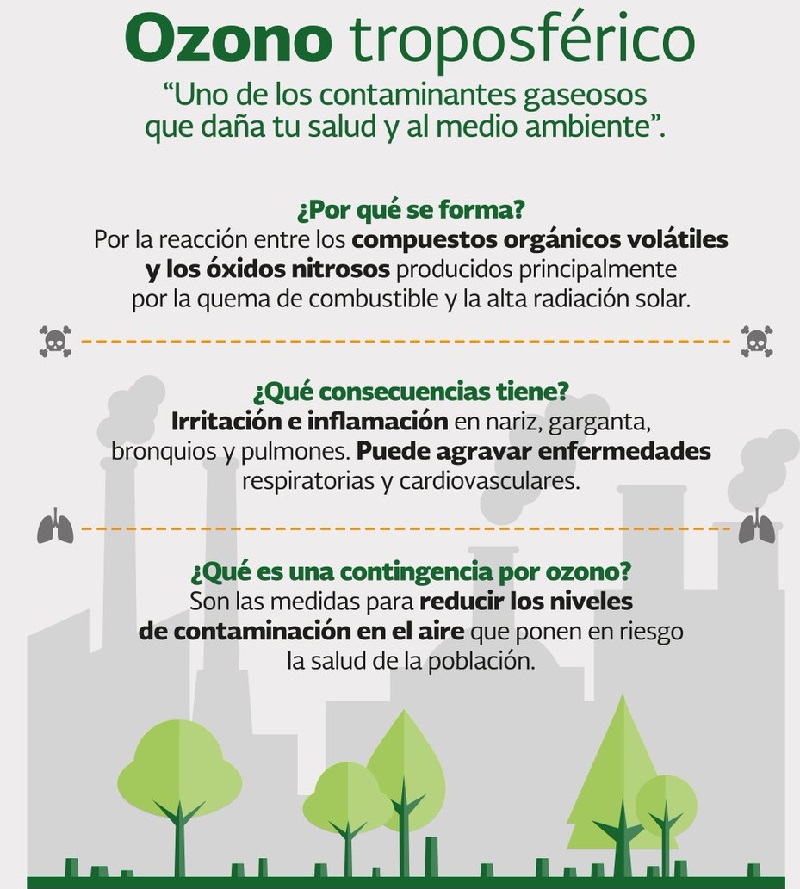
Tropospheric ozone, being an irritating gas, has very harmful effects on human health.
The severity of the effects depends on the concentration, duration of exposure, and the level of physical activity performed during the exposure time.
What effects does tropospheric ozone have on health?
Sensitivity to ozone action It depends on various factors, but It is positively correlated with the preexistence of respiratory diseases, physical activity or even genetics.
Effects of tropospheric ozone in case of asthma
In the case of asthmatic people, attacks increase with time of exposure to high levels of ozone. Therefore, if in addition to suffering asthma attacks you are a child, normally used to doing physical exercise, the risk of exposure to ozone is even greater.
What is ozone used for?

What is ozone effective with?
Ozone acts very effectively in eliminating numerous substances that give odor and flavor to water. In this regard, these substances can be grouped into several groups:
- 1) Inorganic compounds that cause flavor such as iron, manganese, copper and zinc and inorganic compounds that cause odor such as the hydrogen sulfide ion SH- .
- 2) Organic compounds, byproducts of the metabolism of certain cyanophycean algae and actinomycetes, such as geosmin and 2-methylisoborneol (MIB), as well as others that mainly originate alcohols, aromatic aldehydes, ketones and esters. Also the oxidation of some aldehydes precisely with ozone creates substances that cause odor and flavor.
- 3) Pollutants of industrial origin such as pesticides, solvents, etc.
- 4) Byproducts generated when residual chlorine reacts with organic matter either in the plant or in the distribution network.
Different general treatments for the use of ozone

Surface water treatment:
- Ozone is a highly effective oxidizing agent not only for all bacteria and viruses, but also for common amoebas and protozoa present in rivers, lakes and swimming pools, and for algae, fungi and microorganisms. Many plants use ozone as a primary treatment, followed by filtration and chlorination. Ozone has been shown to be 20 times more effective, 3120 times faster, 100 times more soluble in water and has a much broader spectrum of action than chlorine. In 2000, at the Sydney Olympics, the pool water was treated with oxygen and little chlorine.
Treatment of small boats
- Ozone is ideal for the treatment of small vessels, which generally produce water with concentrations of iron, manganese, sulfur derivatives and fecal coliforms in concentrations above health standards. Remote or urban areas with few craftsmen will not find a better solution for water treatment than other chemicals needed to obtain a continuous and automatic process of better quality drinking water.
Effluent treatment
- The effluents are different from one place to another. Ozone can be used in all processes that require oxidation reactions, elimination of sulfates (bad odors) and precipitation of heavy metals. Its oxidation capacity allows the effluents to be treated in such a way and with such a degree of purity that it is possible to recycle these waters back into the industrial process.
air treatment
- Ozone can treat polluted air both directly and indirectly. In direct applications, it is injected through ventilation in favor of the air flow. In indirect applications it is used to treat water from cooling towers of centralized air conditioning equipment.
Agriculture and food industry
- Ozone has many applications in agriculture, livestock and the food industry, such as hydroponics (single-use plant growth technology), grain silos, aquaculture, fish and shrimp farming, sugar refining and branching, bottled water , water treatment for beer and soft drinks, among other areas.
What are the uses of active oxygen?
Applications d Active oxygen uses

Active oxygen is a highly recommended disinfectant due to its oxidizing capacity.
Due to its oxidizing capacity, as well as its instability, which causes it to quickly revert to oxygen, ozone can be used in any process that requires rapid and effective disinfection.
Uses of ozone dissolved in water
Thus, ozone dissolved in water is used for purification, recovery of wastewater for irrigation and recreational uses, washing of food and work tools in contact with it in the Food Industry, washing of clothes (in industrial, community or private laundries). , irrigation water, gas washing, ice production, control of Legionella, etc.
air ozonation
In air, ozone is used to disinfect indoor environments, in order to ensure the microbiological quality of the air, as well as to control odors: cold rooms, HoReCa channel, dry food disinfections, gyms, waste management plants, etc. .
Ozone for what else is it used
Food industry

- Ozone, due to its super disinfecting, oxygenating and deodorizing capacity, can combat all types of pathogenic organisms without leaving chemical residues, since it transforms into pure oxygen after a few minutes. This gas is widely used around the world as a technology that saves processes, guarantees disinfection, is safe, and is approved by health institutions such as the FDA, USDA and EPA.
Ozone in the Home

- There are many uses of ozone in the home, and they translate into better health, economic savings, time savings, not using chemicals that could put health at risk or have side or harmful effects.
Ozone molecule in veterinary medicine

- The Ozone molecule has been experiencing quite a boom in veterinary medicine in recent years due to all the benefits and savings it represents, thus helping to solve problems that previously seemed impossible, and in a very simple way.
- The Ozone molecule has been experiencing quite a boom in veterinary medicine in recent years due to all the benefits and savings it represents, thus helping to solve problems that previously seemed impossible, and in a very simple way.
Ozone as a deodorizer: eliminates all types of odors

- Another function of ozone is its ability to eliminate bad odors of any type from the root without leaving residual remains. This treatment is very useful in closed spaces where the air is not constantly renewed. In this type of spaces, and also if there is a large influx of people, unpleasant odors are generated (tobacco, food, humidity, sweat, etc.) due to the molecules in suspension and the action of the different microorganisms on them.
- Like any disinfectant, the disinfection capacity with ozone depends on the concentration in which it is found and the contact time between the disinfectant and the pathogens. Ozone reacts very quickly against pathogens since it is an oxidant for them.
- ASP ozone services not only eliminate bad odors from indoor environments quickly and effectively, but ozone also disinfects and reduces environmental pollution. It must be taken into account that biological contamination is almost always what causes the stench.
Application of ozone in the air

- In our long experience we have confirmed that the places with high occupancy or with a significant movement of people, As the changing rooms, toilets and cafeterias constitute critical points in terms of environmental microbiological contamination it means. In addition, the appearance of bad odors is common in them. In order to solve these problems, in these conflict points we propose treating the air with ozone.
- For this purpose, the dosage of small quantities of ozone through modular generators or through the air conditioning ducts in the common areas, so that the air inside is at all times free of microorganisms and chemical contaminants of all kinds, providing a pleasant, fresh environment free of bad odors.
- This action also involves the disinfection of the air coming from the air conditioning systems, frequent sources of microbiological contamination.
- Likewise, there is the possibility of carrying out shock treatments at night, at which time, as there are no people in the room, the doses of ozone can be higher, achieving a more complete disinfection of the air and surfaces.
Microbicidal action of ozone

- MICROBES: bacteria, viruses, fungi, spores, mites.
- It is the most important quality of ozone and why it is used the most.
- The concept of microbe is very extensive, it encompasses any form of life that is not visible to the naked eye and that requires the use of a microscope to contemplate it, we will include bacteria, viruses, fungi and spores.
- These beings perpetuate themselves on all types of surfaces, causing many contagious diseases.
- With the chemical methods used until today, ozone is the most useful and effective microbicidal agent that exists and its antiseptic action has a broad spectrum that covers most microbes: bacteria (bactericidal effect), viruses (viricidal effect), fungi ( fungicidal effect), spores (sporicidal effect).
- MICROBES: bacteria, viruses, fungi, spores, mites.
- It is the most important quality of ozone and why it is used the most.
- The concept of microbe is very extensive, it encompasses any form of life that is not visible to the naked eye and that requires the use of a microscope to contemplate it, we will include bacteria, viruses, fungi and spores.
- These beings perpetuate themselves on all types of surfaces, causing many contagious diseases.
- With the chemical methods used until today, ozone is the most useful and effective microbicidal agent that exists and its antiseptic action has a broad spectrum that covers most microbes: bacteria (bactericidal effect), viruses (viricidal effect), fungi ( fungicidal effect), spores (sporicidal effect).
Industry
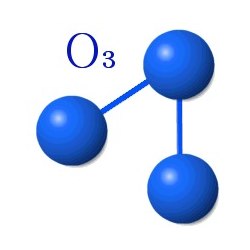
- For industry, the triatomic molecule of Ozone has enormous uses in general, with the enormous advantage of being a product that does not need to be stored and that has no risk due to the lack of management and control, as happens with packaged toxic substances.
Use of ozone in shops

- There are an extensive number of applications that Ozone has due to its ability to disinfect the environment and water in various businesses; eliminate bad odors produced by waste or human, animal or plant presence, by combustion or cooking; and can oxygenate places that feel suffocated by the lack of this vital element.
- There are an extensive number of applications that Ozone has due to its ability to disinfect the environment and water in various businesses; eliminate bad odors produced by waste or human, animal or plant presence, by combustion or cooking; and can oxygenate places that feel suffocated by the lack of this vital element.
Use of ozone in medicine
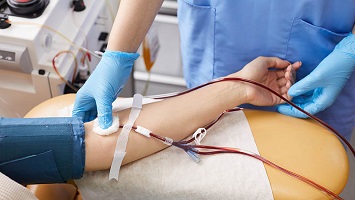
- For more than 150 years, ozone has been used to treat various conditions with excellent results and at a low cost. With current technology there are many advantages for its handling and application, which is simple and without harmful side effects in prudent hands. This technology is more within everyone's reach and the benefits of the uses and applications of ozone in health have been seen.
Ozone disinfection in dentistry

- The benefits and advantages of ozone in the dental area are enormous, since it can be disinfected with great safety and high efficiency. Among the uses and applications of ozone is that it reduces inflammation of damaged tissues and promotes wound healing. Where they have taken advantage of it the most is in the dental whitening technique without causing hypersensitivity and promoting an improvement in periodontal health at the same time that this technique is performed. Ozone is the new revolution in dentistry
Bacterial effect of ozone
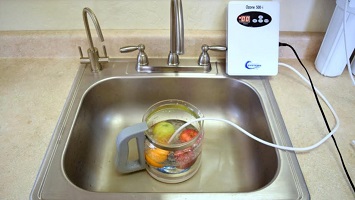
- Ozone began to be used in water at the beginning of the last century.
- The advantages of ozone with respect to other antibacterial products is that this effect is evident at low concentrations (0,01 ppm or less) and during very short exposure periods and a bacteriostatic effect is already perfectly observable.
- The difference between a bactericidal effect and a bacteriostatic effect is simple: a bactericidal agent is capable of killing bacteria, a bacteriostatic agent does not kill them, but does prevent them from reproducing, quickly slowing the growth of their populations.
- Although they are different effects, a population of bacteria without the capacity to reproduce is doomed to its disappearance.
Viricidal effect of ozone
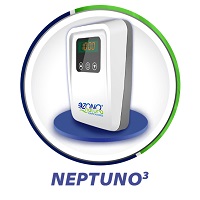
- Viruses are considered living beings and inert matter; they do not survive or reproduce unless they parasitize cells, causing their destruction.
- Unlike bacteria, viruses are always harmful and cause diseases such as flu, colds, measles, smallpox, chickenpox, rubella, poliomelitis, AIDS (HIV), hepatitis, etc.
- Ozone acts on them by oxidizing the proteins of their envelope and modifying their structure. With all this, the virus cannot bind to any cell because it does not recognize it, and being unprotected, it cannot reproduce and ends up dying.
fungicide effect of ozone
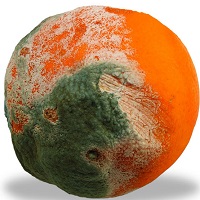
- There are fungi that have the ability to cause diseases.
- Many others cause alterations in food making them unsuitable for consumption, as in the case of mold.
- With ozone, we will eradicate all infectious forms, whose spores are in all types of places, and thus avoid possible cellular damage.
Sporicidal effect of ozone
- There are fungi and bacteria that, when conditions are contrary to their development or reproduction, create a thick envelope around them and stop their metabolic activity, and remain in a dormant state. When the conditions for their survival are again in their favor, they regain activity in their metabolism.
- This resistance is known as spores and are typical of bacteria as pathogenic as those that cause tetanus, gangrene, botulism or even anthrax. Through ozonation of the environment where they survive they are drastically eliminated.
Elimination of mites with ozone

- Mites are microorganisms from the arachnid family that live in thousands in our homes, especially in mattresses and pillows, as they feed on the remains of human skin and scales.
- Dead mites and their excrement cause allergies and other conditions such as asthma or rhinitis.
- Treating pillows, mattresses and other places where mites can proliferate with ozone helps eliminate them and thus avoid symptoms of allergies and other conditions.
Disinfect pool with ozone

What is ozone and what does ozone disinfection consist of?
Disinfection of water with active oxygen in swimming pools
Ozone (O3) is a molecule made up of three oxygen atoms. It's a gas which is found naturally in high layers of the atmosphere and is characterized by having a great oxidizing power. This oxidizing power makes ozone a highly effective and safe solution for disinfecting, just as It has been used for decades in hospitals and the food industry.
Disinfection with ozone eliminates pathogens through the oxidation of the coating of viruses, bacteria and fungi and a wide spectrum of microorganisms, which are deactivated.
Once this has occurred, the ozone It decomposes in the same way that it occurs in the atmosphere naturally and becomes oxygen again, so it does not leave no type of residue chemical. This characteristic, together with the fact that its production is ,, makes it the most environmentally sustainable option.
In this disinfection process, it should also be noted that ozone acts as a powerful deodorizer. eliminating the origin of odors unpleasant.
What are its main advantages over other disinfection systems?

As we have mentioned, ozone is one of the most powerful oxidants of the nature. With respect to other disinfectants, it is worth highlighting their powerful, since being a gas, it manages to reach every corner - something that does not happen, for example, with bleach. In addition, ozone disinfection No. damages materials that are treated, due to the low concentrations of O3 and the low exposure times that are required. It also does not leave chemical residues after use and is a more sustainable option. It is also worth highlighting its effectiveness as deodorant -Eliminates unwanted odors.
Huge profits when disinfecting pool with active oxygen
Active oxygen is an alternative disinfectant to chlorine, characterized by the softness and quality it gives to water, avoiding the discomfort derived from chlorine. It is colorless, odorless and harmless, does not irritate the skin or eyes and is beneficial for both people and the environment.
Global trends: ozone treatments and UV systems to avoid water problems
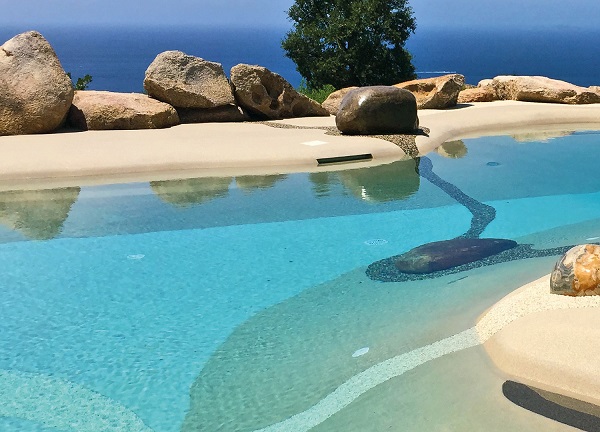
Ozone for swimming pool water
Un ozone generator for swimming pools is the ideal solution so that your pool no longer suffers from the classic smell of chlorine, the water tastes bad, and becomes a place for recreation or sports with a pleasant atmosphere.
By using ozone, which is made up of oxygen, one of the components of water, you will be eliminating, in addition to all the microbes present in the water, the annoying smell of disinfectant, and this will have an impact on the general well-being of the users.
The use of ozone is independent of the size of the glass, being equally effective in a sports, recreational pool open to the public, or in the disinfection of a small garden.
A good ozone generating device for swimming pools it will take integrated a programmer that will ensure that the water is not overloaded with too much biocide when users are in the water.
You should also program the generator to work at the appropriate time, as it is better to clean and disinfect all the water while it is available, than to do it at the same time that people are entering and leaving the pool.
However, with ozone generators for swimming pools More advanced, this problem is eliminated, since they have a water inlet, where ozone is applied to the water for complete disinfection, and a controlled outlet, where before releasing the water to the pool its composition is analyzed and ensures eliminate excess ozone if any, so that swimmers are not at risk.
How active oxygen works in swimming pools
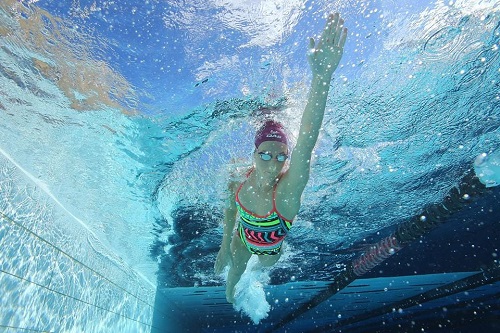
Active ingredient oxygen for swimming pools
The active principle of this system is the powerful oxidation of organic matter dissolved in water. This alternative to chlorine It releases oxygen that combines with organic matter and stops its activity. All disinfection methods with active oxygen are based on the combination of two active components that complement each other to carry out, on the one hand, the disinfection of water and oxidation of polluting agents, and on the other, the prevention of algae. This combination makes a synergistic effect possible, which is essential to achieve a disinfectant power similar to that of chlorine.
Ozone generation
Ozone has a very short life so it has to be generated at the place of use. It has been possible to produce it artificially using ultraviolet light, or by high voltage discharges. Ozone generators used in swimming pools use high-voltage corona discharge, applying it to the ambient air that circulates through a reduced space, producing the dissociation of oxygen O2, to which an atom of another dissociated oxygen molecule is added, resulting in end of ozone (O3).
Application of ozone in swimming pools
Ozone is a disinfection treatment, so physical treatments such as water recirculation, filtration, cleaning, etc. cannot be dispensed with. The conventional purification system will be installed (filter, motor...) and an ozone generator, which will take air from the environment, filter and dry it, to pass it through an ozone cell. In it, through high voltage and frequency electrical discharges, oxygen 02 will be decomposed to generate ozone 03. Finally, a small compressor will inject it into the hydraulic circuit of the treatment plant so that it mixes with the pool water.
The treated water will be incorporated into the pool, coming out through the jets or impellers, generating bubbling at their exit. The ozone generator works automatically, at the same time as the pool purification system.
Recent research in the swimming pool sector has revealed that the use of chemical products does not always guarantee total cleaning and free of bacteria.

In this way, treating swimming pools with ozone is a great option as a substitute for chlorination or a great complement, which will reduce the dose of chemical products and save on maintenance.
Many organisms are resistant to chlorine (such as Cryptosporidium and Escherichia coli) and can cause health problems. Instead, pool companies can offer their clients two highly recommended, safe and ecological methods: ozone treatment and ultraviolet systems.
Recent research in the swimming pool sector has revealed that the use of chemical products does not always guarantee total cleaning and free of bacteria. Many organisms are resistant to chlorine (such as Cryptosporidium and Escherichia coli) and can cause health problems. Instead, pool companies can offer their clients two highly recommended, safe and ecological methods: ozone treatment and ultraviolet systems.
How is ozone production generated in swimming pools?
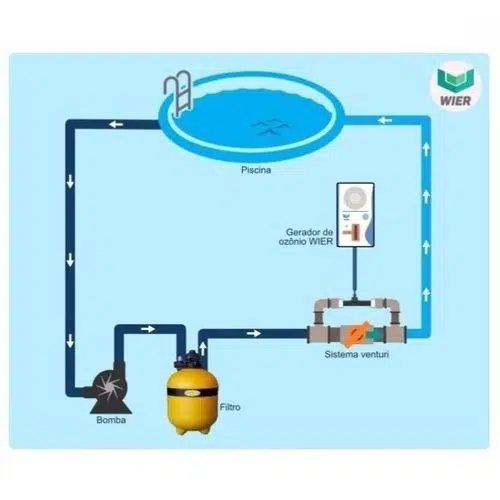
Active oxygen for swimming pools is produced artificially using different methods.
The most used active oxygen generation system for swimming pools involves the use of electricity through the “corona discharge” process and involves oxygen extracted through ambient air or oxygen pumps.
The application of the ozone resulting from this process is carried out using ozonators of different types and powers depending on the volume of water to be treated and other technical considerations.
The operation of the ozonator results from the use of a small electrical generator that, connected to the 220 volt current, produces an electrical voltage, the corona discharge, close to 6.000 volts and that produces both negative ions and ozone.
The O3 produced by these ozonators never becomes toxic because, being a very unstable gas, it does not accumulate and because its production is regulated according to the need for the volume to be treated.
Ozone dosing is carried out through an autonomous system with both automatic and manual control and regulation.
The disinfectants used, in addition to ozone and to a much lesser extent, as required by current regulations, will be chlorine and bromine.
Ozone production is carried out through specific lamps.
- In the case of large pools, the production of active oxygen for swimming pools is done using specific lamps, which continue to treat the product in a completely natural way that leaves no residue and reduces the amount of complementary chlorine.
For their part, UV systems are gaining ground in the treatment of water in swimming pools and home spas.
- Ultra violet lamps emit a germicidal ray that eliminates organisms, bacteria and parasites. Its energy consumption is minimal and it can act for longer.
How often should active oxygen disinfection be carried out for swimming pools?

The frequency of disinfection will depend on the following factors:
- The number of people who live together or share the space, since people are vectors of pathogen transmission.
- The ventilation that exists in the cabin.
- The degree of disinfection necessary, depending on whether people are more or less vulnerable in case of infections.
Taking these factors into account, you can choose thoroughly disinfect empty spaces (eliminating 99% of microorganisms) or treat the air with ozone emissions at low concentration, in the presence of people, who reduce by around 80% microorganisms in the environment.
In this sense, the application of ozone in low concentrations -below 0,05 ppm- it is advisable to continuous way: allows you to reduce the microbiological load in the environment and eliminate odors. This application must be combined with correct ventilation and adequate particle filtration, which ensure that indoor air quality is optimal.
On the other hand, knowing that people are carriers and transmitters of pathogens, it is advisable to also carry out shock disinfections -with higher concentrations- of periodically. These disinfections must be carried out in the absence of people to ensure maximum safety and effectiveness - it eliminates 99% of microorganisms.
In any case, the frequency will depend on the particular circumstances of each room to be treated.
Use of active oxygen in swimming pools

In which facilities can we adapt ozone for swimming pools?
When we recommend the use of active oxygen
The use of active oxygen = higher quality of pool water
The use of active oxygen is recommended if you are looking for a Higher water quality, softer and less aggressive. A pool without odor, without color, without irritations, without discoloration, and with water that is beneficial for both people and the environment.
Swimming pools in which ozone can be used

Ozone for private pools

Ozone for community pools

Public swimming pool with ozone
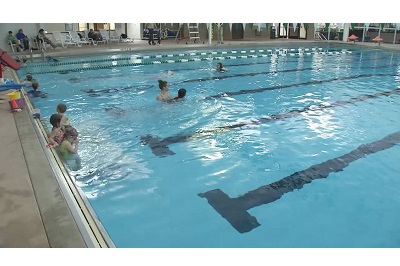
Swimming pools in gyms with active oxygen

Active oxygen in SPAS and spas

Active pool oxygen for water parks
Is ozone good or bad for health?

Debunking the toxicity of active oxygen
Ozone in itself is neither good nor bad for health, it is its effects on microorganisms and numerous harmful chemical compounds that are beneficial.
Ozone toxicity via inhalation

- Ozone, if breathed in large quantities, can even be toxic with prolonged exposure; however, moderate respiratory exposure can cause irritation to the eyes or throat (which usually passes after breathing fresh air for a few minutes).
Applied in air, despite being classified as "Irritant" by inhalation, the use of ozone in environmental decontamination is safe, contrary to what it may seem at first, due to the perfect control over residual levels of ozone in the breathable air, which allows the use of a highly effective disinfectant without undesirable effects on the people who occupy the common areas of the treated places, largely avoiding the risk of contagion and improving air quality, not only in in terms of microbiological levels, but also in terms of unpleasant odors and stuffy environments, providing healthy, clean and fresh air.
Ozone toxicity for water consumption

As to use of ozone in water, is completely safe and its use is regulated by its corresponding standard, being its usual application in the purification of water.
Is it safe to use ozone as a disinfectant?
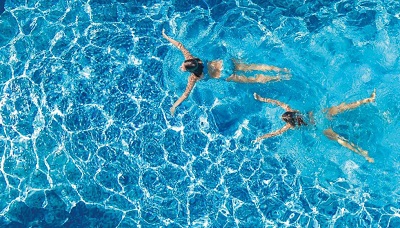
As it is a dangerous chemical substance, ozone can produce adverse effects... Is it a safe disinfection method? What preventive measures must be adopted for its use?
Since, dissolved in water, ozone is completely harmless, there is no limit on doses other than that established by the necessary effectiveness in each case (recovery of wastewater for irrigation, recreational or ornamental uses, elimination of chemical compounds in wastewater textile industry, fiber bleaching, food washing, etc.)
For this reason, ozone, as used for disinfection, is not a hazardous chemical. It is used in low concentrations, for low exposure times and in the absence of people when it comes to deep disinfection. In addition, it is a gas that decomposes quickly and reforms oxygen molecules.
Thus, the use of ozone as a disinfectant does not entail any risk for people, since its application always occurs in controlled environments, with equipment specially designed for this and/or by duly trained professionals, as occurs with any biocide (bleach, alcohol or chlorine) their recommendations for use must be followed.
Safety of ozone dissolved in water
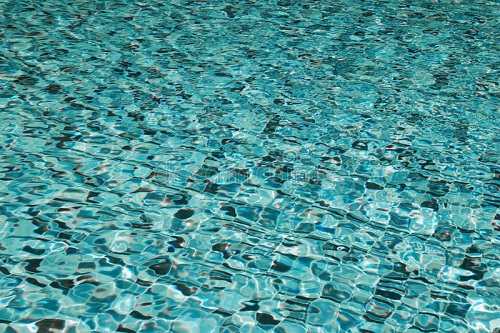
Safety of ozone dissolved in water.
El ozone Dissolved in water, it is a great disinfectant against viruses and bacteria, but its powerful action does not leave dangerous residues that require removal. With proper application, ozonation is completely harmless. water purification both for the human organism and for the environment.
Ozone dissolved in water
After its application in any of the phases of a sewage treatment, ozone decomposes quickly. This is one of the advantages of using ozone for water disinfection, since other methods do involve the problem of byproducts at the end of the process. treatment, such as chlorine and its residues in the form of potentially mutagenic and carcinogenic compounds.
El ozone achieves natural and ecological levels of sterilization of the water compatible with its biological balance.
Its use is, without a doubt, a way to guarantee disinfection without suffering the presence of toxic substances.
Its harmless activity depends, however, on correct use of the equipment. There is a wide variety of instruments on the market that facilitate the measurement of ozone in water and air. Its use is essential to monitor and guarantee the proper functioning of the water ozone generator.
Likewise, the doses of ozone to apply with a ozonator will follow the guideline determined by the prior analysis of the water and the objective to achieve. It will necessarily be generated on site, since the high reactivity of ozone does not allow its transfer, so this immediacy will also result in lower risks of handling and transportation.
Calibrating the right values is essential to avoid possible poisoning, although these are very difficult to produce due to the ease that exists to detect concentrations greater than acceptable ones. The same sense of smell, for example, would very easily warn us of the existence of critical concentrations.
Likewise, according to the ozone generator type used, if used equipment For large water, the residual ozone emitted can be destroyed by ozone destroyers. ozone designed for this purpose. They are prevention measures that can be applied without problems, but are not necessary with adequate practice. When it comes to ozone as a disinfectant, the word reliability always prevails.
The use of active oxygen/ozone treatment is regulated
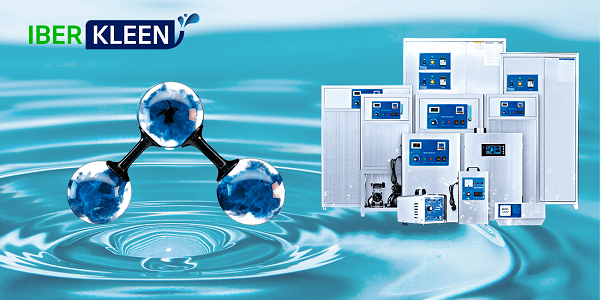
How active oxygen/ozone treatment is regulated
DDue to its irritating nature, exposure to ozone, either due to its presence as a pollutant, or to the treatment of air for biocidal purposes, is perfectly regulated, with all regulations in this regard coinciding with the maximum exposure values, taking into account the dose/time relationship of said exposure.
- Safety recommendations of the UNE 400-201-94 standard: <100 µg/m³ (equivalent to 0,05 ppm)
- The INSHT Environmental Limit Values (ELV) (National Institute of Safety and Hygiene at Work) establish exposure limits for ozone depending on the activity carried out, with the most restrictive value 0,05 ppm (daily exposures of 8 hours) and 0,2 ppm for periods less than 2 hours.
- EPA (US Environmental Protection Agency) establishes a standard of 0,12 ppm for 1 hour of exposure.
- The OMS (World Health Organization) proposes a reference value of 120 µg/m³ or 0,06 ppm for a maximum period of 8 hours
Is ozone harmful?
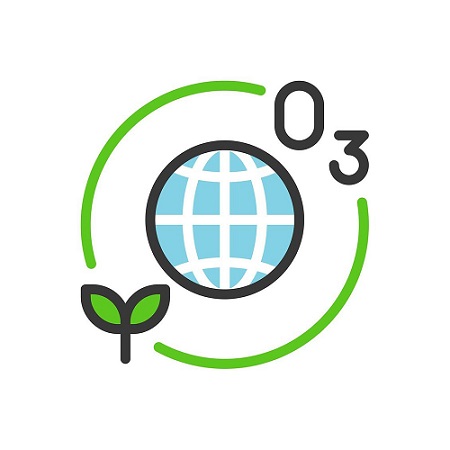
Why can ozone be toxic to people?
Because, like diatomic oxygen (the one we breathe), it is an irritant agent of the mucous membranes when inhaled, at high doses, and/or if breathed for too long. That is why there are established maximum exposure levels, depending on the time of said exposure.
Ozone is a powerful oxidant, generally not harmful to mammals at low concentrations, but lethal to microorganisms such as bacteria.
In any case, ozone, like any other oxidizing agent, can be harmful if not handled correctly in its applications in air.
Possible adverse health effects are listed in the Ozone Safety Data Sheet. The only route of exposure to ozone is through inhalation, that is, if it is breathed in large quantities (greater than those recommended in the regulations, or for long periods of time).
Is ozone carcinogenic?

DO NOT. Ozone is only an irritant agent (Xi), according to the classification of its toxicological sheet,
- This classification as an irritant agent refers to exclusively to their concentrations in air, that is, to the problems derived from its inhalation, which depend on the concentration to which people are exposed, as well as the time of said exposure.
- In fact, the regulations issued by the WHO, on which the rest of the regulations are based, including the professional exposure limits for Chemical agents in Spain ELV (Environmental Limit Values), adopted by the National Institute of Safety and Hygiene at Work. (Ministry of Employment and Social Security), recommend a maximum concentration of ozone in air, for the general public, of 0,05 ppm (0,1 mg/m3) in daily exposures of 8 hours.
- Therefore, ozone is in no way carcinogenic or mutagenic nor is it classified as such.
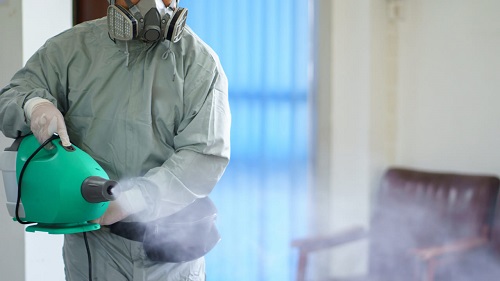
Is ozone disinfection appropriate in the home environment of older people? And in social health centers?
Ozone has been used for decades in healthcare centers for the correct disinfection of rooms and utensils. In this way, the World Health Organization (WHO) recognizes ozone as “the most efficient disinfectant against all types of microorganisms” in its study.
As ozone treatments can be carried out with different levels of O3 concentration, in these senior centers it is very useful to thoroughly disinfect common spaces (dining rooms, leisure rooms) when they are empty, since it eliminates microorganisms from the surfaces, reaching every corner (where it is difficult with a cloth and bleach), while disinfecting the air.
In addition to this, with the emission of ozone at low concentrations, the air in the presence of people can be treated, reducing pathogens in the environment and to which is added the deodorizing power of ozone, very useful in centers where groups of people live together, since it aims to make the air cleaner and prevents the spread of unwanted odors.
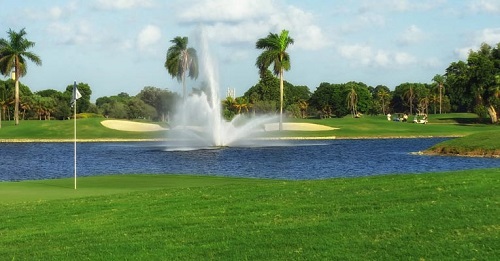
Is it safe to use ozone in irrigation systems?
Yes. In fact, ozone, a powerful disinfectant, stands out as an effective weapon in the treatment of irrigation water,
both in the last steps of his purification, like in the well water disinfection, as it is also capable of decomposing numerous harmful chemical compounds, and can be used both for the disinfection of soil and plants by spraying with excellent results, as it is capable of eliminating phytopathogenic fungi, viruses and bacteria.
The use of ozonated water for irrigation achieves, in addition to providing a water completely free of microorganisms potentially dangerous for plants, decontaminate the soil, significantly improving their physical-chemical properties, thereby transforming them into soils richer in nutrients, from which the plant more easily obtains the elements it needs for a vigorous growth and healthy.
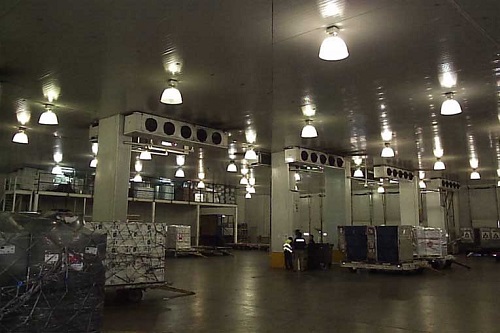
Is it safe to disinfect cold rooms with ozone?
It is not only safe, but beneficial: ozone, thanks to its high oxidizing power, eliminates microorganisms, both pathogenic and opportunistic, present in food without leaving residual chemical agents, which ensures proper sanitization of the cold rooms where they are stored. food, as well as the surface of stored food, without leaving harmful residues on them.
Furthermore, the use of ozone in cold rooms achieves:
- The asepsis of food handling, conservation and distribution premises.
- The reduction in food weight loss during storage.
- The absolute deodorization of the premises and suppression of the transmission of odors from one food to another, which can optimize the use of the chambers.
- The possibility of keeping food in optimal condition for longer storage times, by increasing its useful life by eliminating surface microorganisms, responsible for food decomposition processes.
- In storage rooms for plant products, ozone eliminates ethylene, delaying the ripening processes.
On the other hand, the rapid decomposition of OZONE, due to the high relative humidity, allows personnel to work safely in storage chambers where high concentrations of this element are necessary immediately after the production of O has ceased.3, as this is quickly transformed into oxygen.
- What is ozone
- What are the properties of ozone?
- Where can we find active oxygen naturally?
- What is ozone used for?
- Disinfect pool with ozone
- Is ozone good or bad for health?
- Active oxygen prohibited in swimming pools
- Health benefits of pool ozone
- Advantages of using active oxygen to disinfect pool water
- Active oxygen swimming pools disadvantages
- How the ozone generator works
- Ozone generator equipment
- How to measure active oxygen in swimming pools
- Active oxygen formats
- How to use active oxygen for swimming pools
- Active oxygen pool maintenance
Active oxygen prohibited in swimming pools
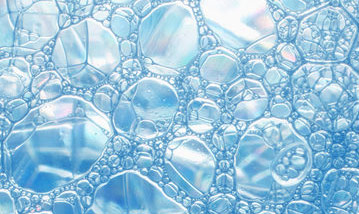
Active oxygen for swimming pools prohibited
Draft law of December 2016 and subsequent legislation
Already December 2016 was published in the Official Gazette of the Cortes Generales un bill of law on explosives precursors promoted by the Council of the European Union.
Who prohibited the use of oxygen
This is due to a restriction of processing for marketing throughout the European area, following a EU regulations 98/2013, the European Parliament and the Health and Social Services Council, from different products considered explosive precursors.
Since then they have been legislating and it has borne fruit Law 8 / 2017 of November 8 published in the Official State Gazette of November 9, 2017, in which this comes into force law on explosives precursors.
Why was the marketing of hydrogen peroxide banned?
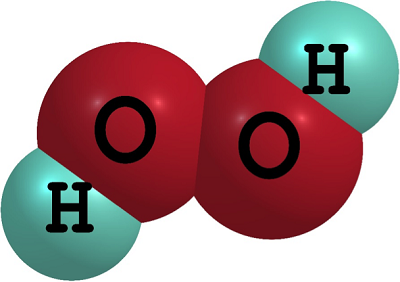
The approval of this law seems to have been triggered and accelerated by the latest attacks occurred in Barcelona and Cambrils in August 2017. And it has the support of different national and European organizations behind it. fight against terrorism.
Usually the hydrogen peroxide based products which has one concentration greater than 12%, they will not be authorized and sold more to the general public, being necessary a series of requirements y permits, as well as a control and registration of who buys said products, even if it is in a lower concentration.
As el hydrogen peroxide intended for swimming pool water treatment is around the 25 and 35%, has triggered that be prohibited and can no longer be used by professionals or the end customer.
May 2020. The sale of ozone as a disinfectant is allowed if it complies with current regulations

The Ministry for the Ecological Transition and Demographic Challenge clarifies that it is permitted to market ozone as a disinfectant as long as it complies with current regulations, minimizing its release into the environment as much as possible.
From the General Subdirectorate of Clean Air and Industrial Sustainability, as the competent body in the environmental evaluation of biocidal products, and following various queries that have reached the Ministry for the Ecological Transition and Demographic Challenge, it is considered necessary to clarify the following:
It is allowed to market ozone as a disinfectant as long as it complies with the regulations in force, minimizing its release into the environment as much as possible.
When can ozone be legally used?

1. The use of ozone is only planned in legal cases notified to the competent authorities. This means that the possible uses only include:
- Disinfectants for surfaces, materials, equipment and furniture that are not used in direct contact with food or feed. Example: car interior disinfectant as well as the air conditioning system carried out by professionals or pool water disinfectant.
- Disinfectants of equipment, materials, surfaces, related to food or feed for people or animals. Example: disinfection of a warehouse for packaged products.
- Disinfectant for drinking water
2. The use of ozone as a disinfectant should not be carried out in natural environments.
On the other hand, the Ministry of Health warns that ozone, like other biocides:
- It cannot be applied in the presence of people.
- Applicators must have appropriate protective equipment.
- As it is a dangerous chemical substance, it can produce adverse effects. The classification inventory of the ECHA (European Chemical Substances and Mixtures Agency) notifies the classification of this substance as dangerous by respiratory route, skin irritation and eye damage.
- The disinfected area must be adequately ventilated before use.
- It may react with flammable substances and may produce dangerous chemical reactions upon contact with other chemicals.
Health benefits of pool ozone

Health benefits of using pool ozone
Below, we indicate the main health benefits of using pool ozone and not another disinfectant:
- There are no contraindications, since ozone does not include harmful chemicals or disinfectants.
- In the event that the recommended amount of ozone is exceeded, it would not be harmful, on the contrary, it would help in the sterilization of the water.
- It does not cause irritation to the eyes, nasal passages, or throat.
- Improves skin regeneration
- Does not cause ear infection.
- It reduces respiratory problems and increases the air conditions around the pool.
- Activates blood circulation.
- Pool ozone relaxes muscles.
- Suppresses the effects of carcinogenic compounds in water.
- It does not damage the hair, but rather prevents hair loss.
- It does not include chemical residues, so the typical pool smell is practically not perceived (it breaks down the molecules that cause odors).
- Prevents the formation of bioproducts such as chloramines and trihalomethanes.
- Finally, pool ozone suppresses in air and water: viruses, prions, molds, bacteria, protozoa, fungi, algae, spores, herbicides, phenols, pesticides, any type of organism and oxidizes organic and inorganic contaminants (cyanides, sulfates and nitrites ).
Advantages of using active oxygen to disinfect pool water
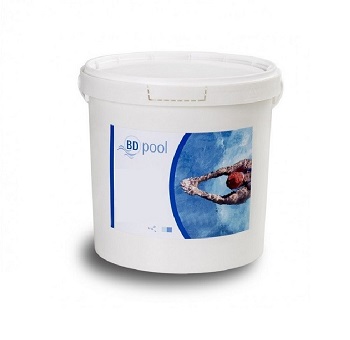
Pool ozone: one of the most powerful water disinfection methods
Pool water maintenance with pool ozone generator (O3) provides excellent results, since it is a very healthy, effective disinfectant agent and even helps the filtration system.
Therefore, pool ozone It is a method of water treatment, in addition, one of the most powerful and fastest disinfectants.
As we have already said, the great water treatment power of pool ozone is due to the fact that it is a germicidal element and purifier of water and air with bactericidal action thanks to its high oxidizing and sterilizing potential, so It acts as a total disinfectant for water, forming oxygen.
In conclusion, Pool ozone (O3) is a gas composed of three oxygen atoms which is achieved through controlled electrical discharges.
On the other hand, la use of pool ozone is becoming more common both in private and public swimming pools, and is being used basically as a replacement for disinfecting swimming pools with chlorine and bromine.
Disinfectant with active oxygen for swimming pools: avoids the frequent problems caused by contaminated water in swimming pools

What advantages does ozone cleaning have over traditional methods?
The traditional methods sterilization and disinfection, whether UV or chemical fumigation, have incomplete blind spots, heavy workload, residual pollution or odor, and may harm human health.
If UV disinfection is used, there is no effect in places where light is not exposed, and there are disadvantages such as decline, weak penetration and short service life.
Chemical fumigation methods also have defects, such as bacteria and viruses that are highly resistant to medicinal properties, and the bactericidal effect is not obvious.
Chemical and microbiological contamination contributed by bathers
- Unlike the small significance that the human contribution to water pollution can have in lakes, in the bathing waters of a swimming pool, this constitutes the most important way of its degradation.
- Before entering the glass, and despite having washed carefully, each bather carries approximately 300 or 400 million bacteria, not counting the 0 g of organic matter they provide in the form of small particles of skin, hair, and fat. , saliva, sweat, urine, cosmetics, etc.
- From a quantitative point of view, a swimmer, consciously or unconsciously, due to a matter inherent to muscular movement, adds about 50 mL of urine to the water in the glass.
- All these contributions of organic matter to the water, together with the warm temperatures used in swimming pools (28-35ºC), provide bacteria and viruses with optimal living conditions in which they can multiply easily, which represents a serious problem that concerns Public Health.
Infections derived from bathing water
- Regarding the mode of penetration of the chemical or microbiological agent into the body, there are two categories: oral or cutaneous.
- The risks caused by water from glasses with a poor disinfection system range from simple mucosal irritation to diseases that can be fatal.
Traditional disinfection (chlorine)
- Chlorination is traditionally the disinfectant treatment mostly used in bathing water.
- The main problem derived from the use of chlorine, apart from the toxicity inherent to its nature, is that, depending on the pH, chlorine combines with organic substances (sweat, urine...), leading to the formation of chloramines (combined or compound chlorine) whose disinfectant power is much lower than that of free active chlorine.
- Furthermore, chloramines are the true causes of conjunctival itching and the annoying odor that bathing waters sometimes have, and their toxicity for aquatic fauna has also been established.
- People exposed for long periods of time to low concentrations of chlorine may develop a rash known as chloracne.
- "The spread of diseases such as infectious hepatitis, poliomyelitis and typhoid fever can be controlled in bathing vessels with a correct design of the ozone disinfection treatment of water."
Pros active oxygen water treatment for swimming pools

What advantages does ozone cleaning have over traditional methods?
Before starting, note that One of the main advantages is that this water treatment system is based on ozone gas, therefore, the non-use of chemical components..
The traditional methods sterilization and disinfection, whether UV or chemical fumigation, have incomplete blind spots, heavy workload, residual pollution or odor, and may harm human health.
If UV disinfection is used, there is no effect in places where light is not exposed, and there are disadvantages such as decline, weak penetration and short service life.
Chemical fumigation methods also have defects, such as bacteria and viruses that are highly resistant to medicinal properties, and the bactericidal effect is not obvious.
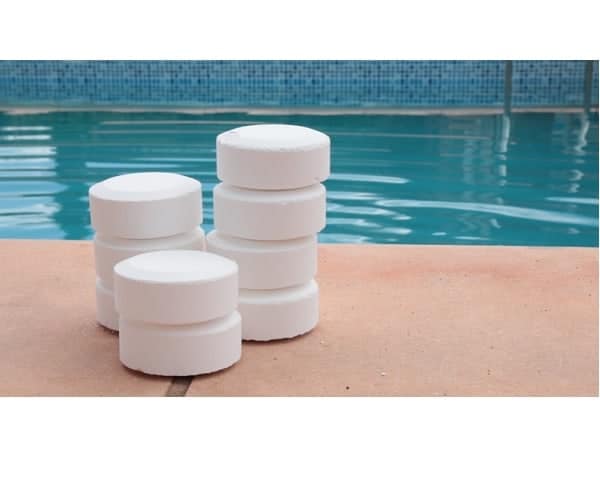
When used correctly, ozone will dramatically reduce the need to add chemicals to your pool in two ways:
- When ozone systems are properly integrated they will act as your pool's primary disinfectant and oxidizer, reducing the amount of bromine or chlorine needed to keep your pool water healthy.
- When used with sodium bromide, ozone has the ability to regenerate spent bromide, this can reduce the use of these chemicals by up to 60%.
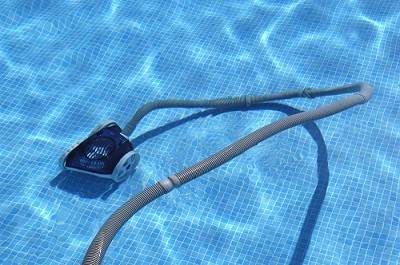
You will spend less time cleaning the pool
Because the ozone system does an excellent job of keeping the water clean, you don't have to spend as much time cleaning the system every week. You will need to drain the structure less than usual to clean the dirt that can accumulate with continued use. There will still be large debris items that you must remove from outside the pool, along with other treatment options that are necessary, but either way, this economical system will ultimately be the best investment.

You will get a healthier pool with active oxygen for pools
Many people are dissatisfied with how comfortable their pool water is. Chlorine and even salt systems have the potential to irritate people's skin, eyes, and respiratory tract.. However, when customers switch to an ozone system, they achieve greater comfort. There is no strong residual chlorine smell, the skin and eyes are not irritated and people with respiratory problems can breathe freely and without problems.
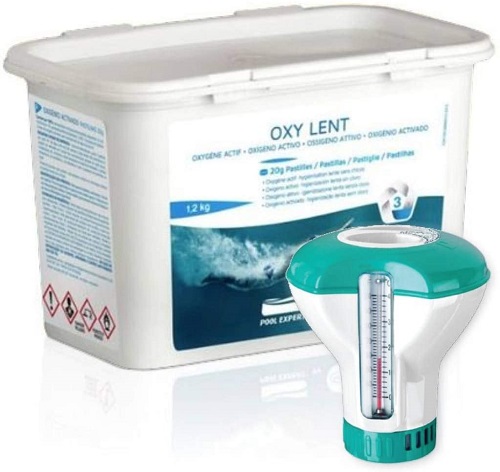
Active oxygen for swimming pools improves water quality
El Ozone will significantly improve the quality of your pool water. Once applied to the pool, a process called micro flocculation occurs. This forces many of the organic contaminants in your pool to clump together and be more easily removed by your ozone-resistant sand filter.
An important point to note is that it will only be as effective as your overall system. To function best, it is important that the pool has an adequate water renewal rate, an efficient filtration system, and balanced water chemistry.
Aspects that improve water quality with active oxygen treatment
- We reduce and facilitate pool maintenance.
- Ozone is a much more powerful and faster product than the conventional pool disinfection system with chlorine.
- It does not affect the pH of the pool or the composition of the water.
- On the one hand, ozone is highly disinfectant in a greater pH range than other disinfection systems, acting within pH parameters of 6 to 9.
- Ozone is a natural flocculant.
- Ozone for swimming pools is an intense anti-algae product.
- We provide oxygenation to the water.
- We save between 70-95% on conventional chemical products (chlorine, anti-algae, etc.), since it has no residual nature
- So, with ozone we save on water, we will not have to renew it so often, since it does not saturate it with the residual products that the chemicals let go.
- The performance of the sand filter will increase, ozone for swimming pools has a coagulation agent.
- We gain clarity and brightness of the pool water, giving it a bluish color.
- No need to recover. The ozone that is applied to pool water is generated continuously by ozonators. This means that you do not need to buy, store, or replace any chemical products.
- It is 100% natural water. The water in ozone pools is no different from the water we can find in a completely clean spring or river. This is because, once it has acted on the contaminants, Its atoms separate forming oxygen.
- Ozone is the most powerful chemical disinfectant and oxidizing agent offered for water treatment.
- The equipment we present is specially designed for use in swimming pools.
- The ozone produced in the generator is introduced through a venturi injector into the pool circuit.
- Each supply is made up of generators, venturi injector, check valve and flexible connection pipe between generator and injector.
What is better active oxygen or chlorine

Which disinfectant is more powerful? Chlorine or ozone?
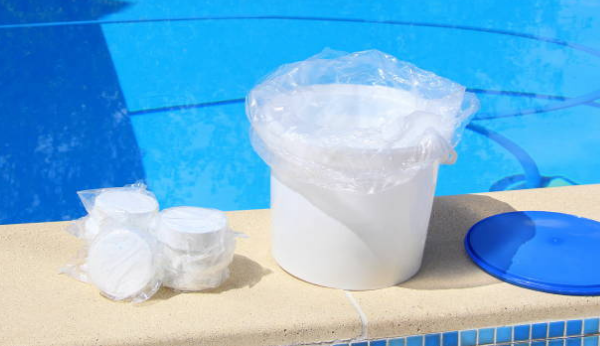
The basis of the bactericidal action of any agent is usually the oxidation of components essential for the survival of microorganisms.
The ability to oxidize these structures more or less easily makes the difference, in terms of effectiveness, of the different compounds normally used in disinfection.
Ozone is one of the compounds with the greatest oxidizing capacity, much higher than chlorine, which means that it has greater biocidal efficiency. In fact, ozone is at least ten times more powerful than chlorine as a disinfectant.
Besides. Although traditionally the most widely used disinfectant product is chlorine, it has serious disadvantages not only in terms of its effectiveness or the environment, but also in terms of public health issues.
What does water contain when disinfected with chlorine or its derivatives?
The derivatives contained in disinfection with chlorine or derivatives are organic matter or chemical contaminants, toxic compounds or compounds that give a bad taste to the water can be generated:
- Chloramines: they give water odors and are considered possible carcinogens.
- Chlorophenols: give water medicated odors and flavors
- Trihalomethanes: they constitute a recurring problem in conventional drinking water treatment processes as they appear in drinking water, and have been related to the appearance of different types of cancer.
- PCBs: proven carcinogenic
- In the case of the wine industry, the presence of chlorine combined with certain conditions and microorganisms present in wineries is the origin of the dreaded anisoles, a real danger for the quality of wines.
Comparison between the disinfectant effectiveness of ozone and chlorine
In a comparison between the disinfectant effectiveness of ozone and chlorine, based on 99.99% of microbes eliminated in the same contact time and at equal concentrations, it is found that ozone is:
- 25 times more effective than HClO (Hypochlorous acid)
- 2.500 times more effective than OCl (Hypochlorite)
- 5.000 times more effective than NH2Cl (Chloramine)
Comparison of ozone in swimming pools vs. pool chlorine
Dangers of chlorine on our health
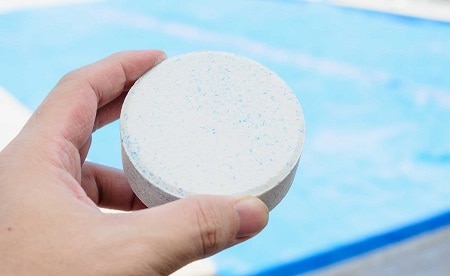
Cons of pool chlorine for the health of bathers
- Eye redness, irritation and possible conjunctivitis.
- Inhalation of irritating gases produces cough, constriction and bronchial mucous problems.
- Skin rashes and blackening of the skin.
- Increased hair loss.
- Contains disinfectant byproducts
- It produces trihalomethanes, which are carcinogenic.
Chlorine disinfection system: add isocyanuric acid
In a pool with a chlorine disinfection system, the component of isocyanuric acid. This accumulates until reaching 400ppm concentration, at which point it is advisable to make a water renewal to avoid toxicity.
In the case of disinfection with active oxygen, since it does not contain isocyanuric acid, it does not give rise to a possible toxic concentration, but even so We recommend renewal every 4 or 5 years.
Active oxygen swimming pools disadvantages
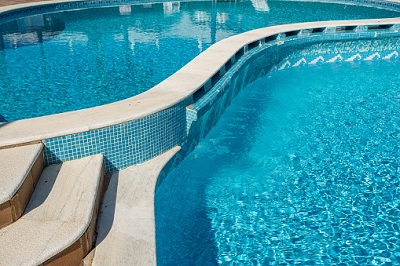
Disadvantages of active oxygen in swimming pools
Active oxygen: A product that has its cost!
APPLICATIONS generally indicated in small private pools
- The application of this disinfection method is indicated mainly in small pools for private use, for a children's public, for bathers with sensitive skin or problems dermatitis, or in general whenever you want avoid the drawbacks of chlorine.
- The application of this disinfection method is indicated mainly in small pools for private use, for a children's public, for bathers with sensitive skin or problems dermatitis, or in general whenever you want avoid the drawbacks of chlorine.
In large swimming pools, active oxygen should be used in addition to another treatment.
- First of all, active oxygen is compatible with all pools. However, as a regular, one-time water treatment, it is recommended for small pools with little traffic and continuous filtration. For the swimming pools of more than 30 cubic meters, it is preferable to use it in addition to another treatment: chlorine, bromine, salt electrolysis, etc.
The use of active oxygen must be complemented with another disinfection system
- Due to the volatility and mild aggressiveness of active oxygen, its application is usually be complemented with another disinfection system. Therefore, we can talk, for example, about a disinfection system composed of oxygen
The technical room of the pool can agglomerate corrosive gas
- Additionally, pool pump rooms can accumulate ozone gas which can be corrosive to pool equipment and rubber gaskets.
Active oxygen is sensitive to UV rays.
- As it does not contain a stabilizer in its formula, it is recommended both combine this treatment with a stabilizer, especially if your pool is exposed to the sun's rays. A combination that will decrease its ecological advantage… To ensure healthy water, it is recommended regularly check the level of active oxygen in the water to know if the product should be added or not. For this, reagent liquids, colorimetric tests or electrode devices are available.
- For the action to be effective, it is important that it does not exceed the 10mg/L.
A product very sensitive to pH variation
- Active oxygen is a product sensitive to pH variation (unlike bromine or PHMB). Its action will be effective with a pH y entre 7 7,6 and its effectiveness diminishes rapidly when it is unbalanced. Therefore, it will be advisable to maintain an ideal pH level to verify that it is optimal for good active oxygen performance and good water disinfection. If necessary, adjust the pH with pH+ or pH- to obtain the correct level before pouring the active oxygen.
A product sensitive to water temperature
- The warmer the water, the more product will have to be added to the pool. active oxygen It loses its effectiveness when the water temperature exceeds 30 degrees. Therefore, this treatment is not recommended for a hot tub or heated indoor pool.
How the ozone generator works
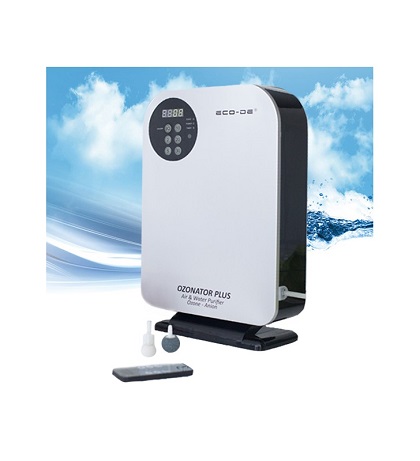
How ozone is formed
Ozone formation
Ozone is formed when oxygen molecules are excited enough to decompose into atomic oxygen, of two different energy levels, and the collisions between the different atoms are what generate the formation of ozone.
How does Ozone work chemically?
How active oxygen reacts chemically

The reaction with which ozone inactivates the microorganisms present in the water is an oxidation in which oxygen, water and inactive microorganisms are generated:
The raw material of ozone
Ozone can be produced from ambient air (21% oxygen, 78% nitrogen, 1% other gases), called standard ozone, or from pure oxygen (supplied by an oxygen tank or by an oxygen concentrator), in this case called Pure ozone. As ambient air contains 78% Nitrogen, in addition to Ozone, Nitrous Oxide will be produced, which can be toxic. The convertibility of environmental oxygen into Ozone is 1% to 2% by weight and of pure oxygen from 2% to 10% by weight.
Standard Ozone is commonly used for most applications, such as in water disinfection processes for domestic cisterns and residential complexes, for the treatment of industrial water and wastewater, irrigation water, etc.
It is recommended to use pure ozone for the treatment of ultra-pure water, for bottling or for use in the food industry in general, for hospital use, water birth tubs or baths for burns, in ozone therapy, in purification of operating rooms, pavilions burn rooms, waiting rooms, terminally ill wards, intensive care units, etc. Ozone has a high reactive index, something that gives it a short life and as such it cannot be stored for transport as is the case with any other gas. Consequently, Ozone must be generated on site and used immediately.
What are ozone generators?

What are active oxygen generators?
The ozone generators They are machines that absorb air and are capable of producing ozone through the corona effect through internal treatment using ceramic plate or quartz tube technology.
Corona effect ozone generator
The corona effect consists of an electrical process in which gas is ionized. When there is an arc of electricity in a conductive material, the oxygen around the arc fuses with the O2 molecules forming ozone O3.
How can the ozone generator be used to disinfect?
Ozone machines can be used in multiple applications and industries and can also be applied through different media such as water and air.
With the situation we are currently experiencing, an ozone machine is effective in eliminating viruses of the coronavirus family and prevent its possible contagion. They are very simple machines to use and offer the security of total disinfection due to the properties of ozone.
We recommend you read our articles on the uses of ozone generators, how they work, etc.
How does the ozone disinfection machine work?

The OZONE GENERATORS They are instruments that allow the treatment of air and water. Basically, these devices generate OZONE (O3) from diatomic oxygen (O2). The system most used to carry out this reaction is called "Crown effect".
The generation core
Among the different components that can constitute an OZONE GENERATOR, this is the most important. It is the place where we generate plasma with the help of electrical energy at very high frequency and very high voltage. When diatomic oxygen (O2), the one we breathe, passes through said plasma, some molecules decompose, giving rise to two oxygen atoms (O). These atoms can react with a molecule of diatomic oxygen (O2) giving rise to OZONE (O3).
The electrical transformer
We have commented that in the generation core electricity is used at very high frequency and at very high voltage. For this reason, another fundamental part of an OZONE GENERATOR is the electrical transformer. The development of electronics has been crucial for the current design of ozone generators to be compact, efficient and economical.
The Oxigen
If you have an ozone generator and electricity, you only need one more thing to produce ozone. Oxygen. Diatomic oxygen specifically (O2). The one we breathe. This is found in the air at a concentration of 21%. Many ozone generators use this oxygen directly. They transport it to the generation core using a turbine or an air compressor. But in industrial applications it is common to use oxygen at concentrations greater than 90%. How do we achieve this? It can be done in two ways: purchasing commercial liquid oxygen or using an oxygen concentrator.
The oxygen concentrator
As its name indicates, it is a system that concentrates oxygen. That is, it takes air from the environment, which has a concentration of 21%, and separates it from the rest of the gases in the atmosphere. Therefore, the gas that comes out of the oxygen concentrator has a concentration of at least 90%. Most oxygen concentrators use zeolites to separate nitrogen from oxygen, like a molecular sieve. These zeolites allow oxygen to pass through, but not nitrogen. And in this way, we achieve a 90% oxygen flow rate from normal air.
Higher oxygen concentration, higher ozone concentration
Why is it interesting to work with high concentrations of oxygen when we generate ozone? When starting from air, the ozone concentrations obtained are low. They can work well in ambient treatment and some basic water treatments. But for industrial treatments, using oxygen instead of air guarantees greater ozone production per kW of energy consumption. This makes ozonation more economical. Furthermore, the higher the concentration of ozone at the outlet of the generator, the greater its effectiveness when treating water. Therefore, this type of ozone generators, those fed with oxygen, are common in water treatments.
Video how an ozone generator works
- What is ozone
- What are the properties of ozone?
- Where can we find active oxygen naturally?
- What is ozone used for?
- Disinfect pool with ozone
- Is ozone good or bad for health?
- Active oxygen prohibited in swimming pools
- Health benefits of pool ozone
- Advantages of using active oxygen to disinfect pool water
- Active oxygen swimming pools disadvantages
- How the ozone generator works
- Ozone generator equipment
- How to measure active oxygen in swimming pools
- Active oxygen formats
- How to use active oxygen for swimming pools
- Active oxygen pool maintenance
Ozone generator equipment

Models of ozone generators for water and air treatment
First of all, we recommend the page Iberisa, which has a wide range of ozone generators depending on needs.
Ozone equipment can be used in homes, businesses, industry, etc., guaranteeing the sterilization and disinfection of bacteria, viruses, protozoa, fungi, bad odors,…
Ozone is effective in eliminating bacteria, viruses (including coronaviruses), protozoa, nematodes, fungi, cellular aggregates, spores, cysts, even the airborne Ebola virus.
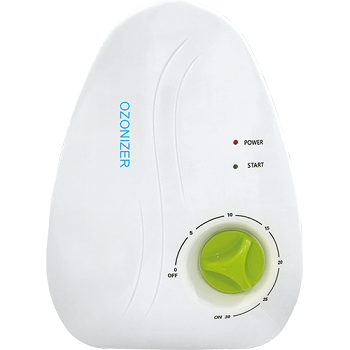
Home ozone equipment
- Home ozone equipment can be used in many applications in homes. They can disinfect rooms and halls through the expansion of ozone through the air and can also be used through water for different applications.
Some of its applications in homes can be:
- Removal of pesticides and chemicals from food
- Elimination of all types of odors (tobacco, pets, cooking, etc.)
- Sterilization of rooms and rooms.
- Disinfection of the refrigerator.
- Elimination of allergens.
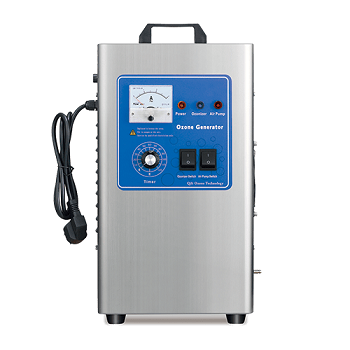
Commercial ozone equipment
- Commercial ozone equipment has a higher ozone production than domestic ones and is therefore more suitable for sterilization work in shops, hotel rooms, offices, vehicles (cars, trucks, buses, taxis,...) and many more jobs.
- They can also be used in homes for faster results.
- The time to disinfect a vehicle is between 10-15 minutes. An ozone device is currently an opportunity for mechanical workshops which can offer a new service to their customers and gain their trust.
- In the case of a 20 m2 room, the approximate time is also around 15 minutes.
- Commercial ozone equipment presents a great opportunity for eliminate all types of viruses and transmit security to customers so that they return with more confidence to their daily lives in shops, offices, vehicles, etc.

Industrial Air Source Ozone Equipment
- Air source ozone equipment sucks it in and filters and dries it. Once this process is completed, they are sent to an ozone generating tube where a chemical reaction occurs that produces ozone.
- This type of ozone machines can be used in different industries and applications: Pharmaceutical industry, food industry, farms, swimming pools, cold rooms, germ-free rooms, etc.
- These models have a higher ozone production and can reach areas of 350 m2.

Oxygen Source Industrial Ozone Equipment
- These ozone machines suck in air, just like the previous ones, but take it to an oxygen unit that makes ozone production more efficient.
- This type of ozone machines can be used in different industries and applications: Large workshops, beverage processing, wastewater treatment, paper factory, faded jeans factories, swimming pool treatment, silk treatment and satin bleaching, fish farming, treatment of drinking water, etc.
- These models have the highest ozone production and can be used and designed for specific applications such as ventilation systems, wall mounts, etc.

O3-UV disinfection cabins
- Ozone and UV light cabinets use ozone and ultraviolet light for disinfection and sterilization.
- There are different models depending on the needs.
- The combination of ozone together with UV radiation in a closed environment makes these cabins ideal for the rapid disinfection and sterilization of any element and especially those that cannot be treated by other methods.
- The disinfection cabins are made of stainless steel
- Aisi 304 that allow heavy weights to be carried for disinfection.
- They have manual and automatic control allowing you to personalize the treatment to be treated.
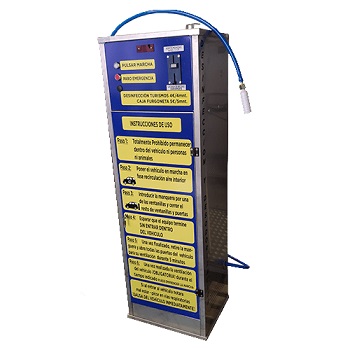
Vehicle disinfection oxono station
- The IBKO-STATION is an ozone station designed for the disinfection and deodorization of vehicles.
- Can be configured for coin or token operation.
The ozone station can be installed in:
- Gas stations
- Public parking
- Shopping Centers
- Vehicle washes
- Truck and bus fleets
- etc.
Disinfectant Ozone Machine Methods

Corona effect ozone disinfection machine system
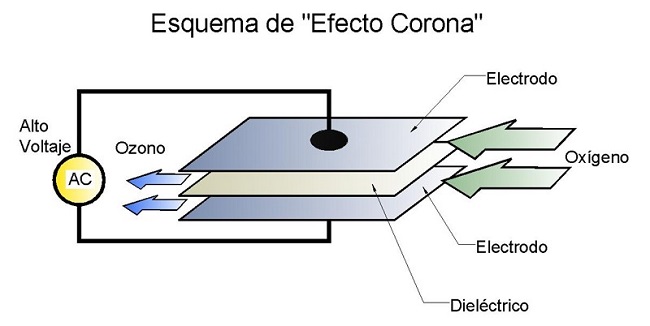
Why does the corona effect occur?
- Being the system increasingly used, it allows the oxygen molecule (O2) of the air to be decomposed into two oxygen atoms (O1), which join with another oxygen molecule (O2) to form Ozone (O3), then being released into the environment.
- The corona effect is due to the accumulation of high potential electrical charges in conductors. When this accumulation of electrical charges reaches saturation, the surrounding air becomes slightly conductive and the electrical charges escape, producing a characteristic sound and emitting light.
- For the corona effect to be possible, a potential of 3.000.000 Volts per meter in dry air at sea level is needed. This means that, at least, with that potential, an electric discharge must be produced that crosses a distance of 1 meter.
- Referring it in centimeters, we will say that a potential of 30.000 Volts will be needed to overcome the air between two electrodes separated 1cm apart. In any case, handling these potentials is very dangerous, so special devices are used to produce a corona effect with lower potentials (of the order of 3.000 V). Corona effect lamps are elements that allow a concentration of high voltages inside, facilitating electrical discharges (corona effect) towards a metal mesh connected to ground, which covers the body of the lamp. These high voltage discharges destroy oxygen molecules and produce Ozone.
- A unit that uses small diameter dielectric tubes is capable of generating up to 14% Ozone from oxygen.
- Different valves for Ozone reactors from Top Ozono
Ozone generator with high frequency technology

Ozone generation with high voltage frequency
For Ozone generation, low and medium voltage frequencies have been changed to high voltage frequencies, modulating between 6.000 and 17.000 Hz for start and stop.
The generation of Ozone through the “Corona Discharge” method with High Frequency technology makes it possible to have equipment in which electricity consumption is reduced, temperature is reduced, its useful life is prolonged and production is increased.
Ozone generation by hydrolysis

Ozone production method by hydrolysis
Hydrolysis is another method to generate Ozone directly from water. Hydrolysis occurs when, in a reaction chamber, an electrical current is directed from a cathode (+) to an anode (-), with water acting as a fluid electrical conductor. With this, several ions with great oxidation power are produced, such as Ozone (O3), hydroxyl (OH-), monatomic Oxygen (O1) and Hydrogen Peroxide (H2O2), also known as Hydrogen peroxide.
Production with this technology is not yet sufficiently developed to overcome the generation power with atmospheric systems, although, in certain applications in which the water does not present high levels of contamination, it may be sufficient to maintain disinfection.
There are basically two types of ozonators:
- Static ozone generators: They are placed in a room and operate continuously or intermittently. They normally have a low ozone production, which allows us to use them in rooms where there are people or animals.
- Portable ozone generators: Also called ozone cannons and shock ozone generators. They have a medium or high ozone production. They are used in empty rooms or vehicles, without people or animals, for a period of time that must be previously calculated.
Elements for water purification with ozone

The ozone water purification generator has several elements
- An air treatment system that prepares the gas to be supplied to the ozone generator.
- Another system specifically for ozone generation. This is the main element of the system, which will allow the treated oxygen to be converted into the ozone that is needed.
- And one last complement prepared to mix the ozone with the water to be treated. It is at this point that the purification takes place.
Ozone generator description
Ozone Generator Features
- The revolutionary combination of ozone and UVC makes a chlorine-free pool possible!
- It will keep your pool water fresh, crystal clear and, above all, hygienic.
- Chlorine consumption can thus be reduced by up to 90%. The special ozone lamp delivers 0,6 grams of ozone. The air, loaded with ozone, mixes with the pool water in the reactor. The mixture of ozone with water causes a very effective disinfection process in the pool water. The water enters the housing mixed with ozone and passes through the Ozon UVC lamp. The lamp has a power of 25 watts UVC and destroys traces of ozone in the water. Connections: Ø63mm. Attention, ground connection. Advantages of Blue Lagoon Ozone UVC: Made in the Netherlands. Up to 35% more performance of UVC radiation due to reflection. 100% effective and constantly operating. 316L stainless steel interior. Blue Lagoon Ozone UVC is grounded. The Ozon UVC lamp provides 4.500 hours of service (± 2 bathing seasons). The device itself indicates when the lamp needs to be changed. Simple installation and maintenance. 2 years warranty against manufacturing defects.
How the ozone generator system works
Steps to follow for the operation of the ozone generator system
- Connect the generator to your pool system.
- The water is then pumped into the apparatus by a pump, passing through the supplied reactor.
- Using the speed of the water flowing through the reactor, the venturi draws air into the reactor.
- This air enters the housing of the device between the quartz tube and the Ozon UVC lamp.
- Finally, the ozone air becomes charged.
Buy ozone generator for swimming pools
Swimming pool ozone generator price
Blue Lagoon TA320 – UV-c ozone pools
Technical data Blue Lagoon TA320 – UV-c ozone
- Dutch orthopedic product
- Integrated transformer ensures a constant power supply
- Up to 35% more UV C reflection performance
- 100% effective and constant effect
- The UV ozone C burns approximately 4000 hours (corresponds to approximately 2 bathing seasons.)
Swimming pool installation with ozone
This system is easy to install and use. It can be placed in newly built pools as well as adapted to existing ones.
To install an ozone generator you only need to have a small free space for its placement near the pool. The purifier should be installed right next to the filter
There are ozone generators for spas on the market that produce approximately 300 mg of ozone per hour. On the other hand, generators for swimming pools produce 3 to 16 grams of ozone/hour. These are reliable systems in terms of water cleanliness and, in addition, they are durable and do not require much maintenance.
Swimming pool installation video with ozone
Pool ozone generator maintenance
The ozone generators for water purification are equipped with a control panel that is easy to activate and understand. It is a fully automatic system, both in its operation and in the doses of ozone generated. In fact, once installed, it does not have to be manipulated again: there is no need to empty any waste containers, nor modify or control the doses...
active oxygen dose pool
Alternative to the ozone generator: floating product dispenser
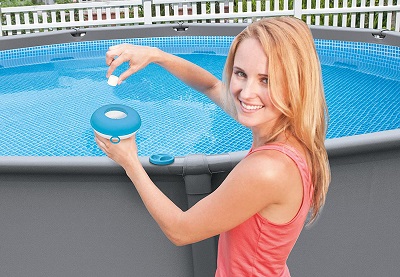
Buy floating pool ozone dispenser
Swimming pool floating ozone dispenser price
Bestway 58071 – Adjustable pool ozone dispenser
[amazon box= «B0029424YU » button_text=»Buy» ]
Automatic pool ozone chemical floating dispenser with thermometer
[amazon box= «B091T3S8YG » button_text=»Buy» ]
How to measure active oxygen in swimming pools

Ideal pool oxygen value
The ideal value of active oxygen in the pool is 8,0 mg/l.
Swimming Pool Active Oxygen Tester
Description of active oxygen analysis kit in swimming pools
- Kit for the analysis of pH and O2 (active oxygen). Includes 60 tablets (30 tablets of DPD 4 and 30 tablets of Red Phenol)
- Practical, easily transportable case.
- It does not take up space. Includes instructions.
- Scale of 8 values per parameter.
- Standard system for reading pool water values. Use a comparison system. Take a sample of the pool water using the transparent container with the color scale and then put the corresponding tablet. The water changes color allowing comparison between the changed color of the water in the column with the tablet and the adjacent graduated scale
Buy active oxygen meter in swimming pools
Pool ozone measuring case price
Pooltester O2 (Active Oxygen) and pH Analyzer Case
[amazon box= «B082D4H764 » button_text=»Buy» ]
Bayrol Ap-2 Tablets Meter – micronet PH/Oxygen for Pool Tester
[amazon box= «B01E8ZMC9Y» button_text=»Buy» ]
Pooltester Quick and easy measurement of active oxygen
[amazon box= «B08DP192X2″ button_text=»Buy» ]
Digital dissolved oxygen meter
What is digital dissolved oxygen tester
- With automatic temperature compensation that will automatically compensate the solution temperature from 0 to 40℃, it can provide you with an accurate and stable reading.
- Suitable for freshwater culture, mariculture, swimming pool, beverage factory, sewage treatment plant and laboratory.
- Compact pen-shaped design, lightweight for mobility, you can test water anywhere to get the purest water.
- High precision and fast response: Quick to get the test result and can test the oxygen value for any 0.0-20.0 mg/L liquid you want to test.
- It adopts digital display with backlight, which is clearer and more convenient for reading data.
Specification digital pool ozone meter
- Condition: 100% New
- Item Type: Dissolved Oxygen Meter
- Plastic material
- Measuring range: Dissolved oxygen: 0.0- 20.0 mg/L
- Temperature: 0~40°C
- Basic Error:
- Dissolved oxygen: ± 0,3 mg/L
- Temperature: ±1°C
- Residual current: ≤ 0,15 mg/L
- Response time: ≤30s (90% response at 20°C)
- Automatic temperature compensation range: 0~40°C
- Power: 4 LR44 button batteries (not included)
Buy digital dissolved oxygen meter
Digital pool oxygen tester price
Digital dissolved oxygen meter
[amazon box= «B076KYY516″ button_text=»Buy» ]
Professional digital tester for oxygen analysis of swimming pool water
[amazon box= «B082D141TB » button_text=»Buy» ]
Active oxygen formats
DOSAGE/FORMATS
Active oxygen treatment can be dosed in two ways: manually, in the case of your solid format; or in liquid, through dosing pump. Each format is suitable for specific circumstances, with its virtues and disadvantages:
SOLID: GRANULATED OR COMPACT
ADVANTAGES
- Eliminates chloramines and organic matter
- Increases water transparency
- Acts quickly, dissolves quickly
- Does not discolor coatings or painted surfaces
- Does not increase calcium hardness or raise stabilizer levels
- Easy to use
- There are no problems with overdose of the product
DISADVANTAGES
- No residual remains permanently
- It is very volatile
- Difficult to measure manually
- It cannot be put in a dispenser because it dissolves very quickly.
LIQUID
ADVANTAGES
- Eliminates organic matter and microorganisms
- Does not combine with chlorine
- Acts quickly, dissolves quickly
- Does not discolor coatings or painted surfaces
- Does not increase calcium hardness or raise stabilizer levels
- Automatic dosing using a peristaltic pump
- It can act as a complement to ozone and UV radiation
DISADVANTAGES
- Need to automate dosing
- Necessary to measure the concentration of peroxide in the water
- Its excess can be counterproductive
- Large consumption
- volatile product
- Cost
Oxipure 12 active oxygen
Where to buy active oxygen for swimming pools: in the online store Ok Pool renovation
Next, we mention the available formats and then go into detail about each of them (if you click on the link you directly access the chosen format).
1st pool format with active oxygen
Active oxygen for swimming pools in pills
Swimming pool ozone price in tablets
Active Oxygen for swimming pools in tablets without Chlorine
[amazon box= «B00T9IT762″ button_text=»Buy» ]
Active oxygen in pool tablets
[amazon box= «B073ZLKSK4 » button_text=»Buy» ]
2nd pool format with active oxygen
Active oxygen for granulated pools
Product description Granulated active oxygen for swimming pools
The combination of active oxygen-based granules cares for the pool for a week, without chlorine. This care method is especially gentle compared to chlorine. It oxidizes impurities and provides soft, odorless water.
, 5 kilo container. Chlorine-free treatment. Powerful solid disinfectant for pool water. Treatment independent of the pH of the water. It does not modify the hardness of the water.
- Disinfection, algae prevention, clear effect and hardness stabilization.
- Already 15 minutes after addition it is possible to swim again.
- Remarkably pleasant and odorless water quality.
Necessary active oxygen dose
Amount at pool start-up
It must be used with the CHLORINE-FREE TREATMENT ALGICIDE DOSE: Starter: 1 kilo for every 50m3 of water.
Measurement of active oxygen required for pool maintenance
Maintenance: 600gr /50m3 weekly 5 kilo container
ADVANTAGES Active oxygen in hallways
- Eliminates chloramines and organic matter
- Increases water transparency
- Acts quickly, dissolves quickly
- Does not discolor coatings or painted surfaces
- Does not increase calcium hardness or raise stabilizer levels
- Easy to use
- There are no problems with overdose of the product
DISADVANTAGES pool ozone in tablets
- No residual remains permanently
- It is very volatile
- Difficult to measure manually
- It cannot be put in a dispenser because it dissolves very quickly.
Swimming pool with ozone in tablet price
[amazon box= «B00NHY8R9W, B07MTFMP1F, B07NY9T33X» button_text=»Buy» ]
3st pool format with active oxygen
Active oxygen powder
Active oxygen powder for swimming pools
Powerful non-foaming solid disinfectant for pool water, independent of the pH of the water. It does not modify the hardness of the water. 1. Great disinfectant power. – Non-foaming – Does not modify the hardness of the water –
Pool uses with ozone powder
- Must be used with Algaecide –
- – If there is a chlorine treatment, stop chlorination 24 hours before applying the non-chlorine treatment. –
- Apply directly to the water all around the perimeter
Ozone application method as a pool start-up treatment
– Starter treatment: 1 kg. for every 50 m/3 of water –
Pool maintenance methodology with ozone powder
Maintenance treatment: 1/2 kg. for every 50 m/3 weekly. – Do the treatment preferably in the evening.
Active oxygen powder for swimming pools price
Buy pool ozone powder
[amazon box= «B00CH0FR2C» grid=»4″ button_text=»Buy» ]
4nd pool format with active oxygen
Liquid oxygen for shock pools
What is LIQUID active oxygen?
ADVANTAGES
- Eliminates organic matter and microorganisms
- Does not combine with chlorine
- Acts quickly, dissolves quickly
- Does not discolor coatings or painted surfaces
- Does not increase calcium hardness or raise stabilizer levels
- Automatic dosing using a peristaltic pump
- It can act as a complement to ozone and UV radiation
DISADVANTAGES
- Need to automate dosing
- Necessary to measure the concentration of peroxide in the water
- Its excess can be counterproductive
- Large consumption
- volatile product
- Cost
Impact liquid oxygen for swimming pools price
Buy liquid pool ozone
[amazon box= «B071VZ6MPN» grid=»4″ button_text=»Buy» ]
How to use active oxygen for swimming pools
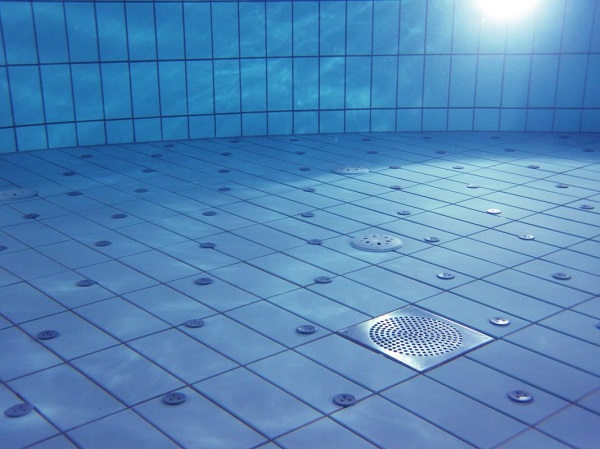
Effects of Ozone on water
It must be taken into account that Ozone, dissolved in water, is completely harmless, since its action on organic matter causes its rapid decomposition. The effective dissolution in water will depend on many factors, among which the temperature stands out (from 40º C it degrades quickly), the exposure and service time, the size of the Ozone bubble to be dissolved in the liquid medium...
The concentration applied will always be reduced at the time of being poured into the treatment glass, the washing lance, etc.
- 0,3 ppm: concentration from which the disinfecting powers of water with Ozone begin to be seriously experienced.
- 0,4 ppm: For an effective disinfection treatment, it is generally accepted that it is necessary to maintain a residual ozone dose of 0,4 ppm for 4 minutes.
- 2 ppm: used in these concentrations in pressure-cleaning or washing machines, it will no longer be necessary to use soaps, disinfectants or biocides.
How long does ozone last in water?
The half-life of Ozone in water is around 30 minutes, which means that every half hour, its concentration will be reduced to half its initial concentration.
For example, when you have 8 g/l, the concentration is reduced every 30 minutes as follows: 8; 4; 2; 1; etc
The extra oxygen atom couples (=oxidation) in less than a second to any component that comes into contact with the Ozone.
In practice, the half-life of Ozone is shorter because there are many factors that can influence it. The factors are temperature, pH, concentration and some solutes. Because Ozone reacts with all types of components, the Ozone concentration will reduce rapidly. When most of the components are oxidized, residual ozone will remain, and its concentration will reduce more slowly.
| Ozone mg/l | Redox mV | Comments |
| 0,0 | 50-100 | Below, bacterial growth |
| 0,1 | 200 | Poor natural water quality |
| 0,2 | 300 | Good natural water quality |
| 0,3 | 400 | Upper limit for aquariums |
| 0,4 | 500 | Damage to the skin of aquatic animals |
| 0,5 | 600 | 100% disinfection. fish death |
| 0,6 | 700 | Disinfection of swimming pools and drinking water |
How to manage ozone in swimming pools?

When administered in water, diffusers can be used to produce "bubbling", placing it at the bottom of a water tank, which will act as a contact tower. Although it will be much more effective to suck the Ozone through a low negative pressure water stream created by a Venturi injection system.
Depending on the type of installation, excess Ozone that has not been properly mixed in the water must be captured and destroyed to avoid corrosion of metals and personal injury that could result from breathing in an excess concentration for a certain time.
Recommendation for use for the pool with ozone
The prerequisite for effective oxygen disinfection is to adjust the pH value to 7,0 – 7,4 with pH Negative or pH Plus.
pH Plus granules from well2wellness. pH Plus is used to raise the pH value. Effective disinfection requires a pH value in the range of 7,0 – 7,4.
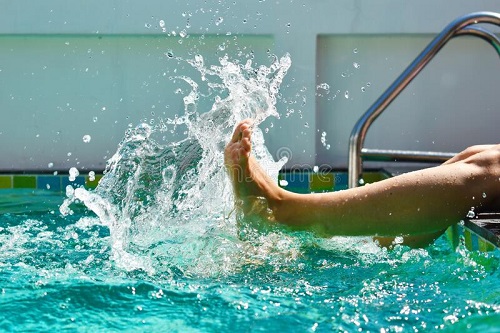
- Check the pH value and place it in the ideal range of 7,0 to 7,4.
- Dispense a double bag per 20 m³/30 m³ (depending on the product chosen) directly into the water.
- At higher temperatures and high bath load, double the number of bags.
- The active oxygen content can only be 1 to 2 hours. After addition, it is measured with the pH/O2 pool tester.
- If the value is less than 8 mg/l, dose another sachet
- In case of water problems (cloudy water, with algae), a shock chlorination with Chlorifix or Chloriklar helps
- When disinfecting water with active oxygen you must take into account the following: -Control the pH of the water. (between 7,2 and 7,4). -Dose oxygen during the coolest hours of the day, preferably at dawn. -Keep the water clean of dirt (leaves, bugs, grease...) both on the surface, the ground and the waterline. -Do a daily check of pH and oxygen levels.
Use of active oxygen according to pool type
Active oxygen for private pools
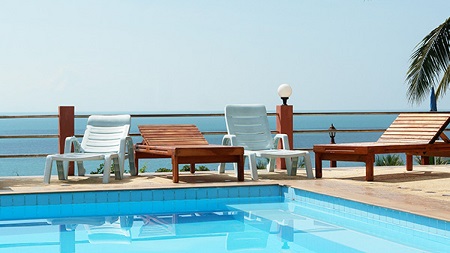
- Active oxygen is the ideal oxidant for pools made with liner, polyester or vinyl, or painted since, unlike chlorine, it does not cause discoloration.
- The approximate weekly dose for pools with little activity is 12g. for every 1000L of water. The dose should be higher when the number of bathers increases or after heavy rain or strong winds.
- Active oxygen is also useful during winter to oxidize and destroy organic contaminants, thus prolonging the action of disinfectants during the wintering period.
Active oxygen for public swimming pools

- Periodic oxidation with active oxygen, since it does not contain chlorine, destroys organic contaminants without producing chloramines or raising the chlorine level.
- It is an ideal ally in spas and indoor pools, where bad odors and irritation caused by chloramines are magnified when in a closed space.
- Generally, public pools need larger doses of oxidant than private ones due to the greater influx of bathers. The reference can be a dose of between 12 and 25 g of active oxygen per 1.000 liters of water, however the appropriate dose will depend on the level of organic contamination (bathers, rain, wind,...).
Active oxygen for spas

Active oxygen is an ideal product to oxidize organic pollution produced by bathers in spas. Furthermore, in those spas that use bromine as a disinfectant, active oxygen also fulfills the function of regenerating bromine (see next point).
Regarding dosage, 30 to 60 g per 1000 L of active oxygen water should be added to the spa water after each use. In this way it oxidizes and immediately eliminates the waste introduced by bathers.
Active oxygen for pools and spas that use bromine
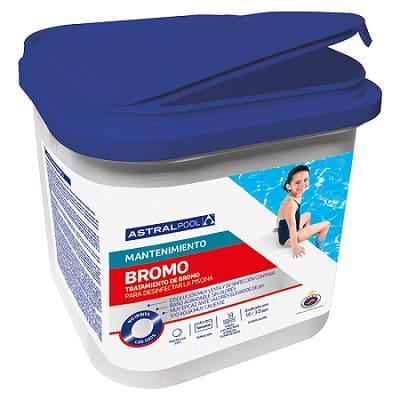
- There are different forms of brominated products: sodium bromide, bromine in tablets for swimming pools,…
- Active oxygen is widely used with these products as part of a two-stage disinfection system.
- In these systems, active oxygen, in addition to oxidizing organic contaminants, also oxidizes or activates bromide ions, transforming them into bromine that quickly forms hypobromous acid (active form of bromine).
- After reacting with bacteria and other contaminants in pool and spa water, hypobromous acid is reduced back to the bromide ion. Bromide ions can be activated over and over again, thus recycling bromine for pools and spas.
- Finally, click on the link if you want more information about: bromine pools.
Procedure for using active oxygen for swimming pools
Now, we will quote you the methodology that is carried out for the maintenance of the pool with ozone in order to understand the magnitude of it and then we will get into each of the steps.
Pool ozone use methodology
- Pool pH regulation
- Pool alkalinity control
- Add ozone to the pool to disinfect the water
- Apply an algae preventative
- Use of clarifying agent
- Water temperature control
1st step procedure for using active oxygen for swimming pools
pH regulation
What is pH
What is ph: Coefficient that indicates the degree of acidity or basicity of water. Therefore, pH is responsible for indicating the concentration of H+ ions in water, determining its acidic or basic character.
The most important requirement for optimal pool care is a suitable pH value. It should be checked regularly, at least once a week.
Ideal pH level
The pH of the waterneo is between the following values: 7,2-7,4.
Analytical strips to control the pH of the pool price
[amazon box= «B087WHRRW7, B00HEAUKJK, B0894V9JZ5, B08B3GBRYK» grid=»4″ button_text=»Buy» ]
Product to increase pool ph
[amazon box= «B01CGKABLE, B01JPDW62C, B00WWOAEXK, B01CGBGCAC, B00197YO5K, B074833D8W, B00LUPP7MU, B07481XMM5″ grid=»4″ button_text=»Buy» ]
Product to lower pool pH
[amazon box= «B00QXI8Z9G, B088TX5JJY, B001982CIA, B003AUIE2S, B006QJOGXG, B0848MK5FR, B00C661F9Q, B07C2XJLMW» grid=»4″ button_text=»Buy» ]
2nd step procedure for using active oxygen for swimming pools
Pool alkalinity control
What is pool alkalinity
To begin, explain that the alkalinity is ability of water to neutralize acids, a measure of all alkaline substances dissolved in water (carbonates, bicarbonates and hydroxides), although borates, silicates, nitrates and phosphates may also be present.
Recommended pool alkalinity level
Pool alkalinity recommended is between 125-150 ppm.
Alkalinity acts as regulatory effect of pH changes.
So, if you do not preside with the appropriate values, you will not be able to have well-disinfected and transparent water in your pool.
Measurement to measure alkalinity: analytical strips.
[amazon box= «B000RZNKNW, B0894V9JZ5, B07H4QVXYD» grid=»3″ button_text=»Buy» ]
How to Increase Pool Alkalinity
[amazon box= «B071458D86, B07CLBJZ8J, B01CGBG8JC» grid=»3″ button_text=»Buy» ]
How to Reduce Pool Alkalinity
[amazon box= «B00PQLLPD4″ button_text=»Buy» ]
3nd step procedure for using active oxygen for swimming pools
Pool water disinfection
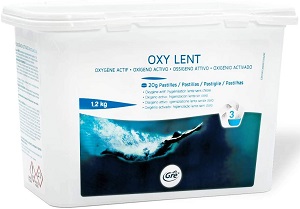
Generic initial treatment for water disinfection with ozone
- Apply 40g of active oxygen per cubic meter. of water. You must match active oxygen with anti-algae.
Generic maintenance treatment for ozone water treatment
- Add 20g of active oxygen per cubic meter to the pool.
- This procedure must be repeated once a week while on the same day we are waiting to apply the dose of anti-algae.
- In addition, it should be noted that when we notice that the water is not completely clear, we should apply more product.
Remember that the doses used also vary depending on the ozone format used.
On the other hand, also remember that the doses used also vary depending on the ozone format used (for more specifications, see just above on this page).
4nd step procedure for using active oxygen for swimming pools
Algae prevention
Algae are microscopic plants in your pool
Algae are microscopic plants They can appear in the pool due to natural elements, such as rain and wind, or they can also adhere to something as common as beach toys or swimsuits.
Why do we require an algae preventative?
Timely prevention of algae growth is necessary, so that algae are prevented from growing and cannot lead to unsightly turbidity or even algae mats.
Pool anti-algae formats
Actually, there are a wide variety of formats to prevent and counteract this widespread problem among pool owners. For this reason, we invite you to visit our page where we explain it in detail: How and when is anti-algae used in the pool? Know all the current formats.
5nd step procedure for using active oxygen for swimming pools
Use of clarifying agent
What is the pool classifier
Clarifiers help the filter trap those small particles that are clouding the water, collecting them and putting them together to form larger particles. (that your filter can catch).
Pool clarifier price
Pool clarifier price
[amazon box= » B07BHPGQPM, B00IQ8BH0A, B004TKORCY, B07N1T34V3″ grid=»4″ button_text=»Buy» ]
6nd step procedure for using active oxygen for swimming pools
Pay attention to the water temperature
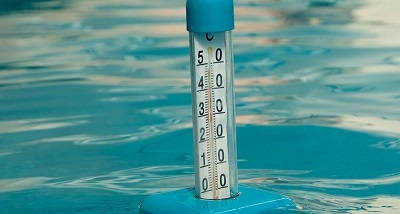
Tracking water temperature
Evidently The water temperature factor always influences its own disinfection, but you have to pay more attention to it when you treat water with ozone.
The reason is because it influences the consumption of active oxygen in a decisive and direct way: the higher the temperature, the greater the consumption.
Video tutorials about the procedure for using active oxygen for swimming pools
Pool treatment manual with active oxygen
Pool ozone in operation
In this video we show our ozone machine works in a swimming pool, so it is no longer necessary to chlorinate it.
Complete active oxygen treatment kit
Active oxygen pool maintenance

Equipment maintenance
At least annual maintenance must be carried out on all equipment in which its general condition will be reviewed.
This inspection will serve to check the operation of the device and replace, if necessary, any component that may have rusted. Likewise, the production module will be examined and its maintenance will be carried out.
Caring for a pool with ozone
Ozone solubility for swimming pools
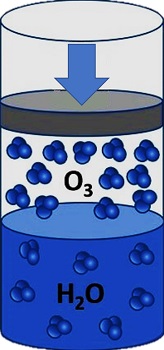
How often should maintenance be performed?

The maintenance of the active oxygen generator for swimming pools will depend on its quality (material)
It will depend on the material of your machine; If it is stainless steel, it is a quality generator and will require preventive care and cleaning up to three times a year. A technician will have to do that. If it is made of another material, we suggest that you check it more often for safety; that is, at intervals of 4 months.
Keep in mind that the warranty includes replacement of parts or readjustment due to malfunction. If you have purchased it from a certified company, the warranty will be longer.
What should be checked in a pool active oxygen generator?
When performing the periodic review, several criteria must be taken into account.
These also tell you if your machine may be having any problems.
- Air quality.
- Ozone circulation.
- Device temperature.
- Odor from ozonation.
- Verification of the operation of the digital display.
- If it is a water ozonation machine, the flow and pressure of the liquid will be checked.
- Checking ozonation and its effects.
Why does my ozonator require more maintenance?
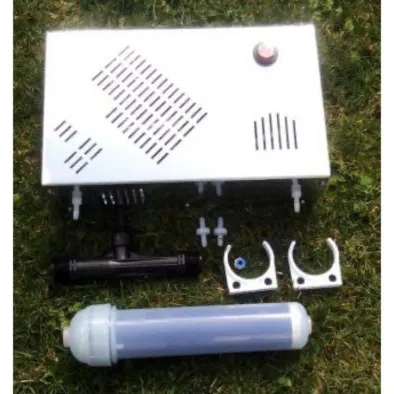
If this occurs, it may be due to the quality of the installation.
It is a matter of checking if perhaps you have the equipment in a very humid space or if there is enough space for the air to escape. You will realize why the ideal is for this device to have easy access.
Finally, check the quality of the outlet to ensure the electrical connection.
We have described the points to take into account during maintenance, but these specifications apply to machines whose procedure to convert oxygen into ozone is carried out through the so-called "Crown effect".
If your device uses the "ultraviolet light" procedure, in that case it will require more details for the lamp and its duration over time will be shorter; Therefore, it will require frequent preventive maintenance.
In general, the ozone machine has great benefits for disinfecting the environment, especially at the current time of pandemic. It is suitable for the home, office, business or larger areas such as hospitals or educational centers. Security is not a problem, but for To ensure its quality, we recommend maintenance with a certified company.
Care when disinfecting a pool with ozone
Maintenance of an ozone generator for swimming pools
Maintenance of a pool treated with ozone is the same as with any other purification method.
Cleaning will be carried out as usual and samples will be taken or the PH, residual, etc. will be controlled. with the same frequency.
With respect to the ozone equipment, you will only have to check weekly that all the pilot lights are on and that the ammeter is at its optimal operating levels.
